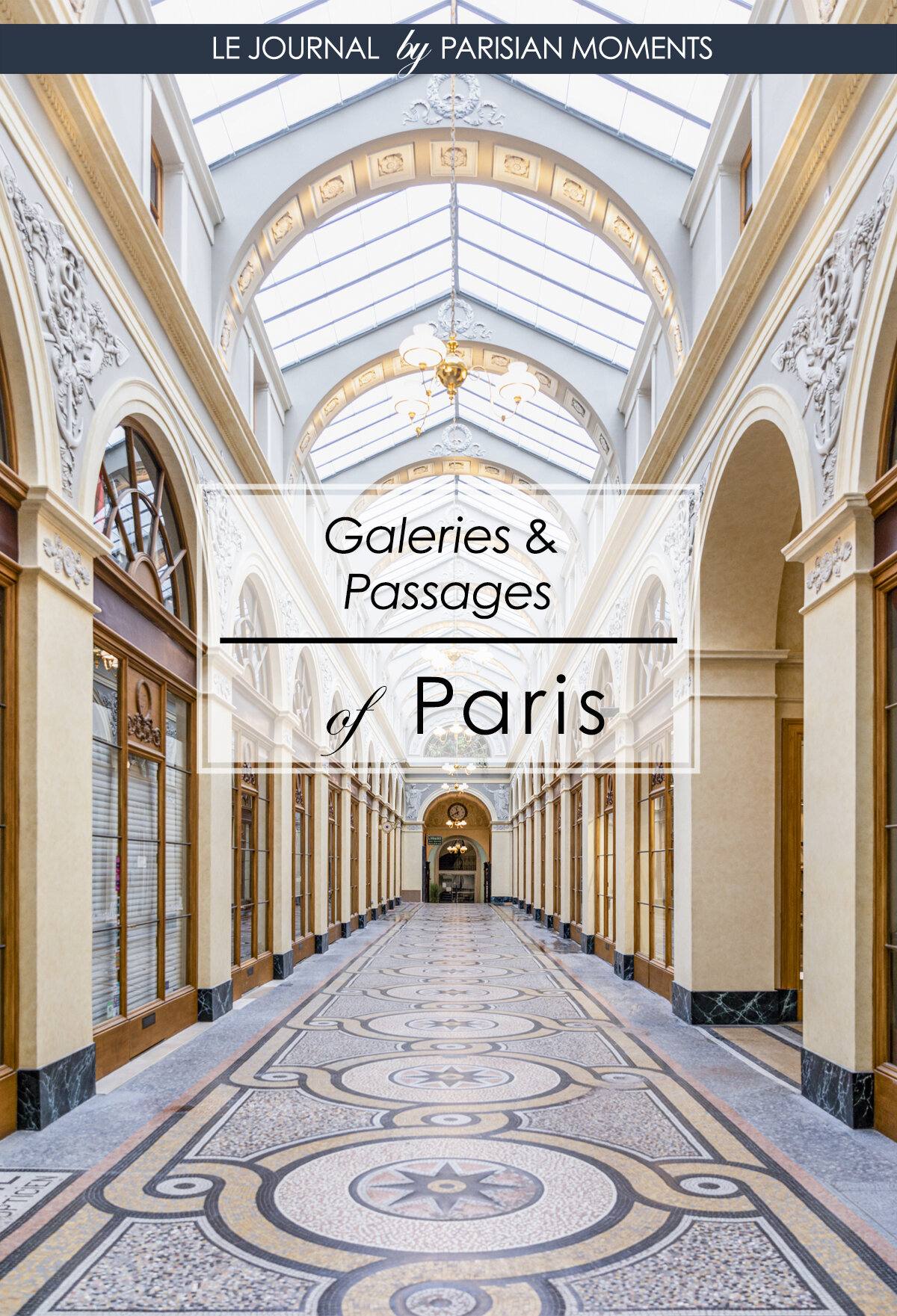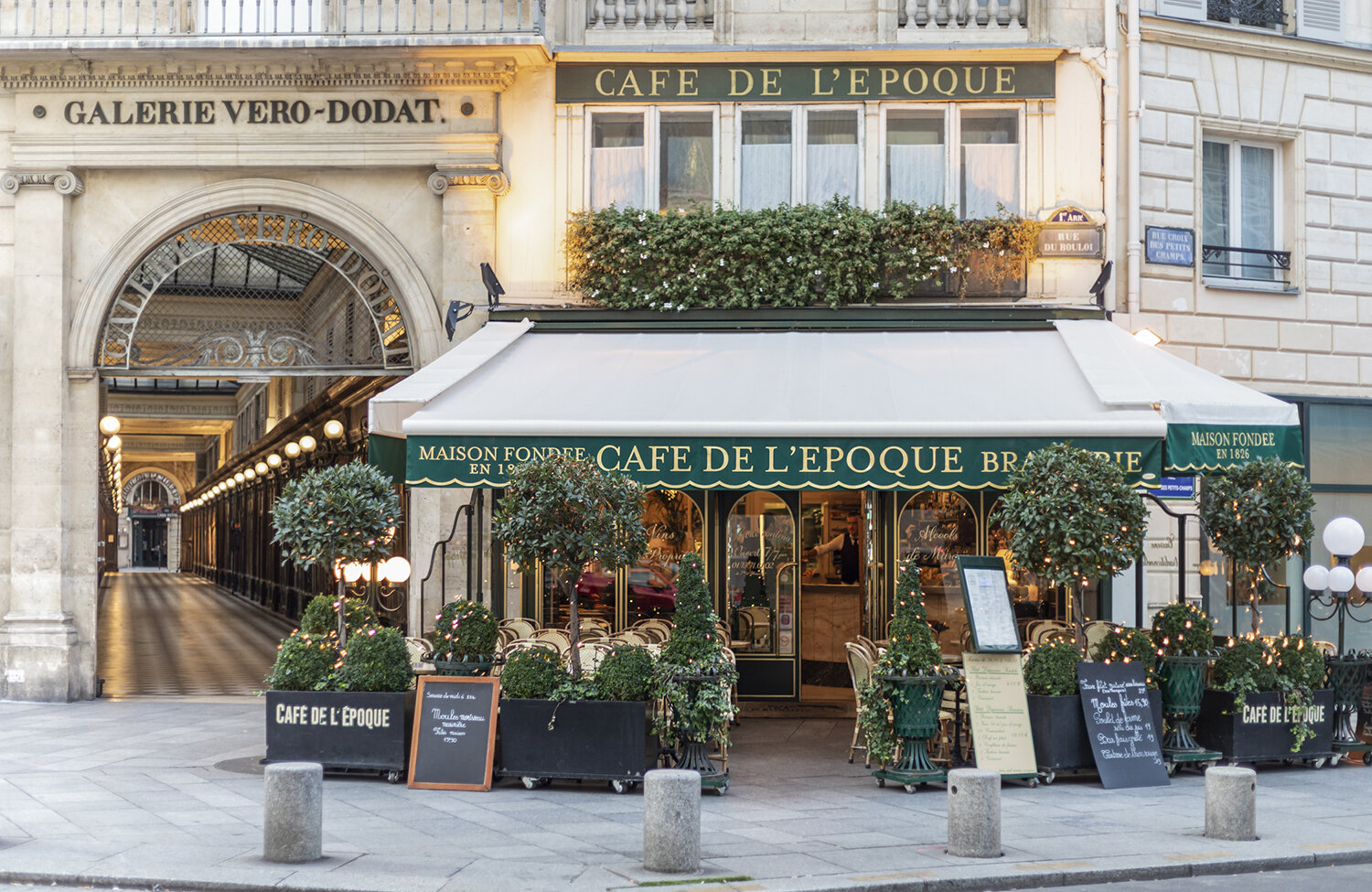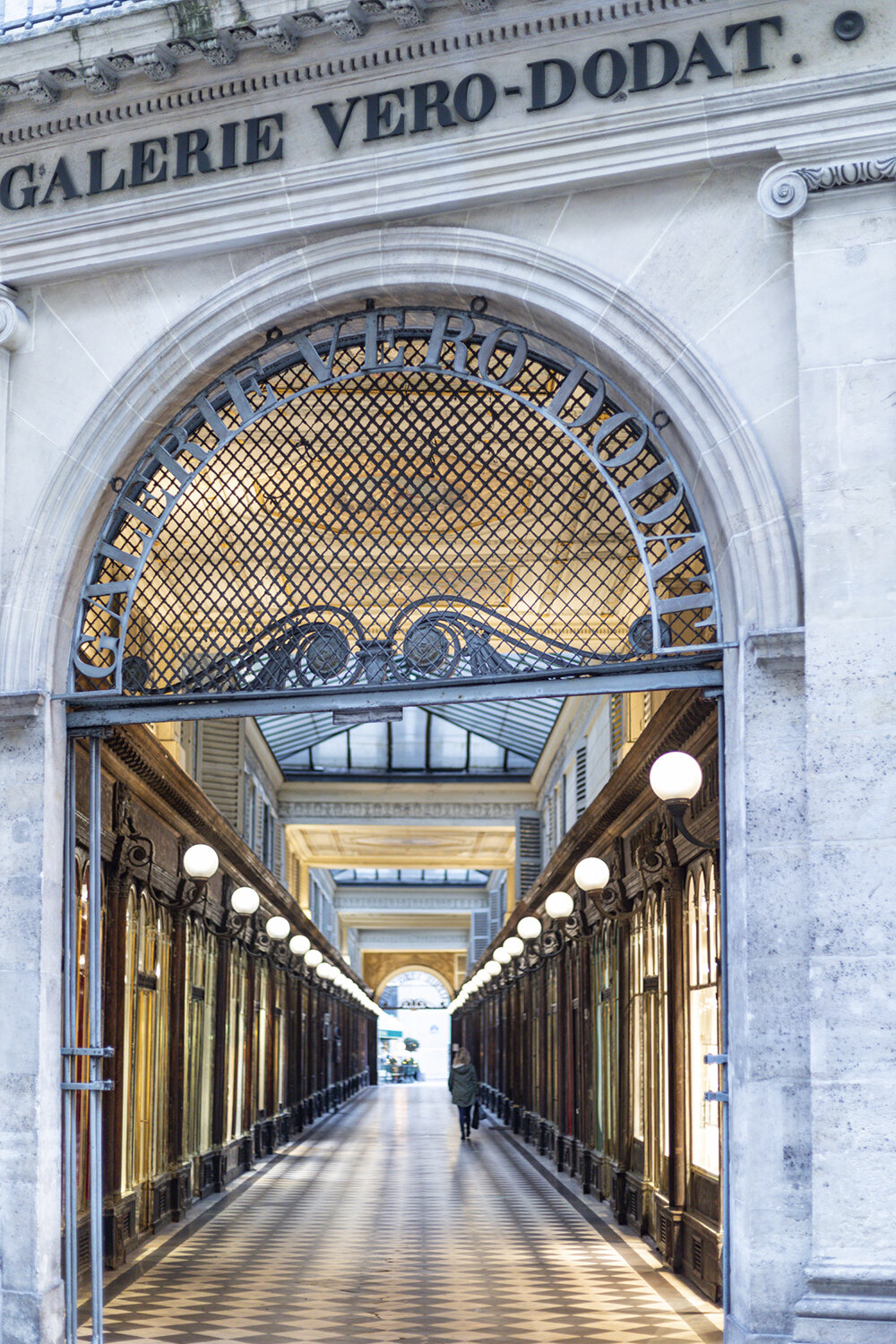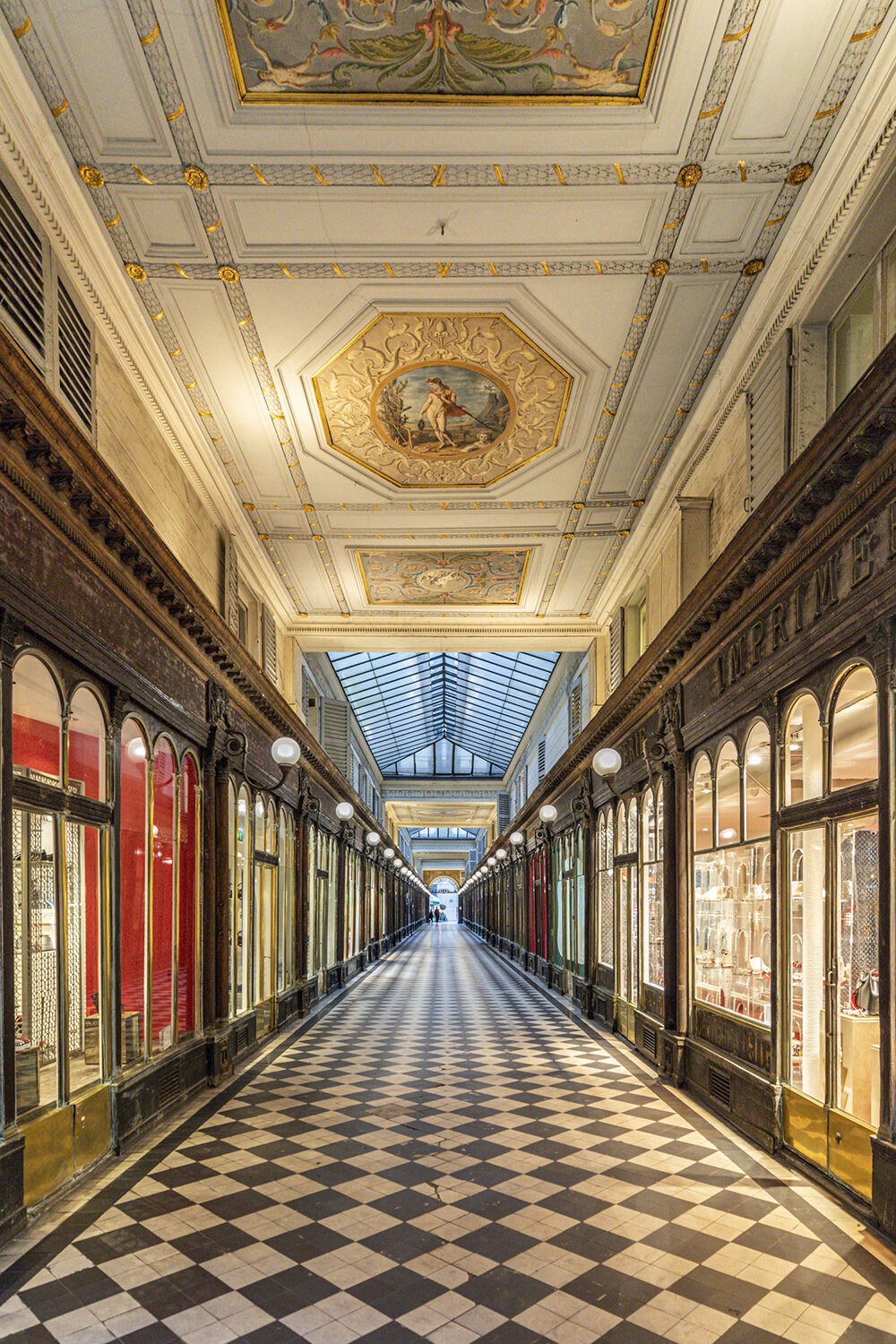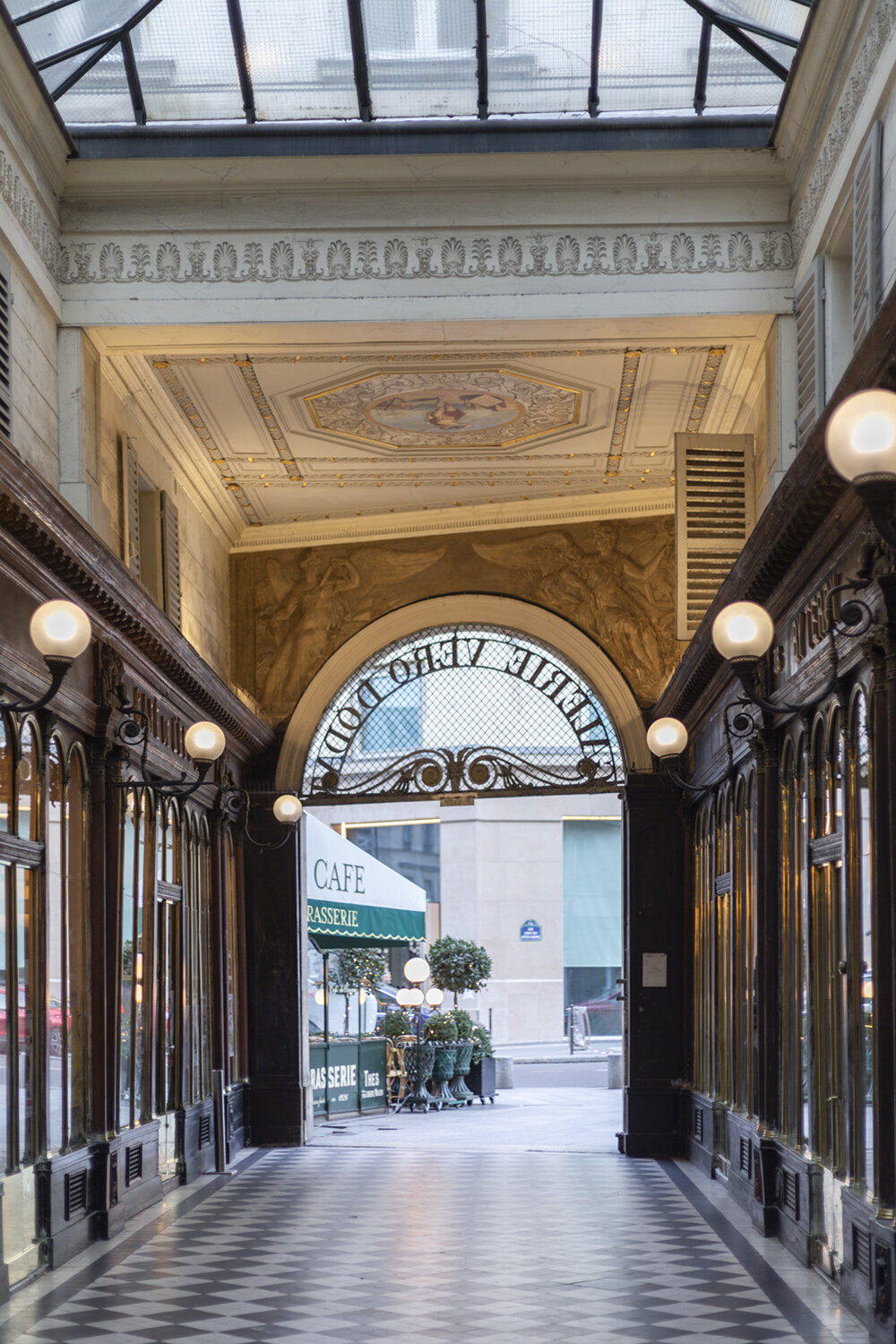Among the less well-known but fascinating features of Paris are its historical shopping arcades and covered passages, predecessors of the shopping malls of today but far more captivating and fun.
The passages or galeries sprung up in the early 1800s as warm, dry oases for the wealthy and the middle classes to stroll, shop and dine – a welcome escape from the rain and mud of Paris in the days before paving and sewers made the streets more habitable. In their day, they numbered at least 150 separate arcades.
The advent of department stores and the urban renewal of Paris at the hands of Eugène Haussmann under Emperor Napoleon III, heralded the disappearance of many of these arcades. Today there are probably fewer than 25 still in business. Different sources quote different numbers but it’s a fairly short list.
We’ll show you just a few of those here. This article is not in any way an encyclopedic coverage of Paris’s galeries and passages. We have not tried to include all the city’s arcades. View this more as a photographic introduction to the lesser known world of Paris’s covered arcades, and an invitation to explore them for yourself. The ten that we feature are listed here not in any particular sequence. Nor are they necessarily the “top ten,” although several of the best known are included.
1
GALERIE VÉRO-DODAT
Built in the early 1800s in the 1st Arrondissement not far from the Palais Royal, Galerie Véro-Dodat connects rue Bouloi with rue Jean-Jacques Rousseau. The Galerie Véro-Dodat was restored to its former glory in 1997, and now houses elegant shops selling antiques, books and works of art. It includes the lovely Café de l’Époque at the rue Bouloi entrance.
Galerie Véro-Dodat Interior. Fine art print available. Click on image.
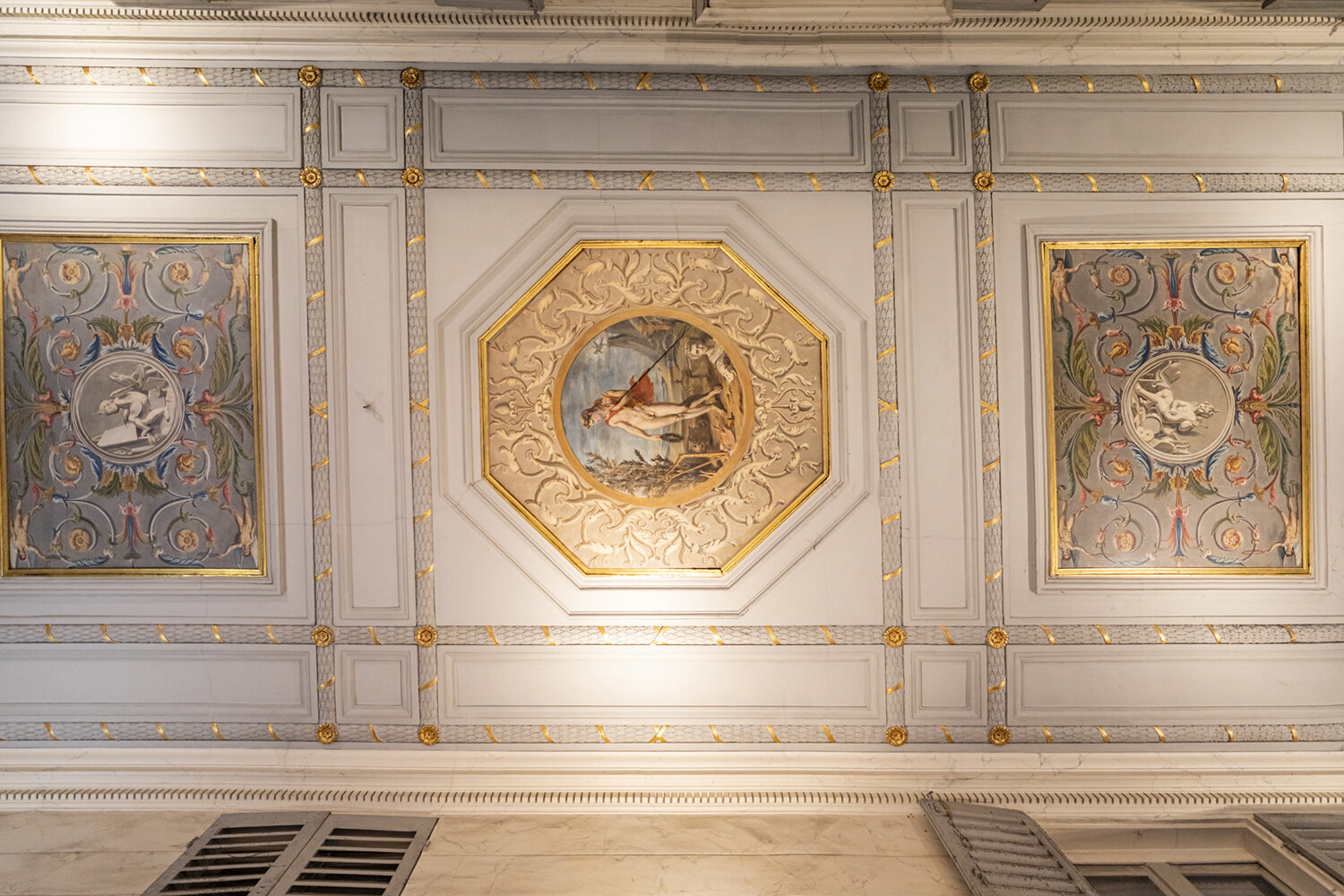
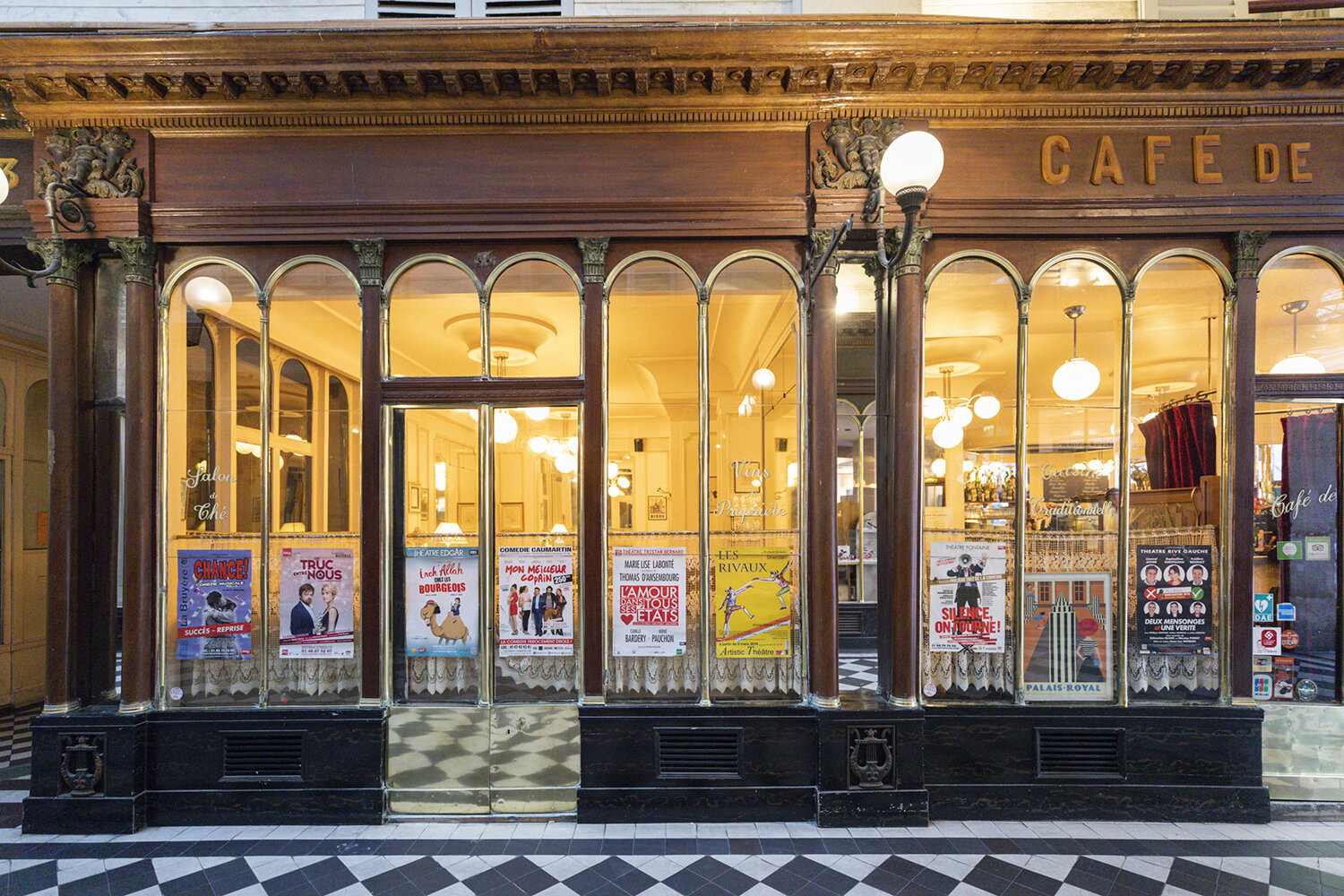
2
GALERIE VIVIENNE
In the 2nd Arrondissement, also near the Palais Royal, Galerie Vivienne, built in 1823, has entrances on rue des Petits Champs and rue Vivienne. The L-shaped arcade has a beautiful mosaic floor and a high iron and glass canopy. The popular Bistro Vivienne spans the entrance to the arcade on rue des Petits-Champs.
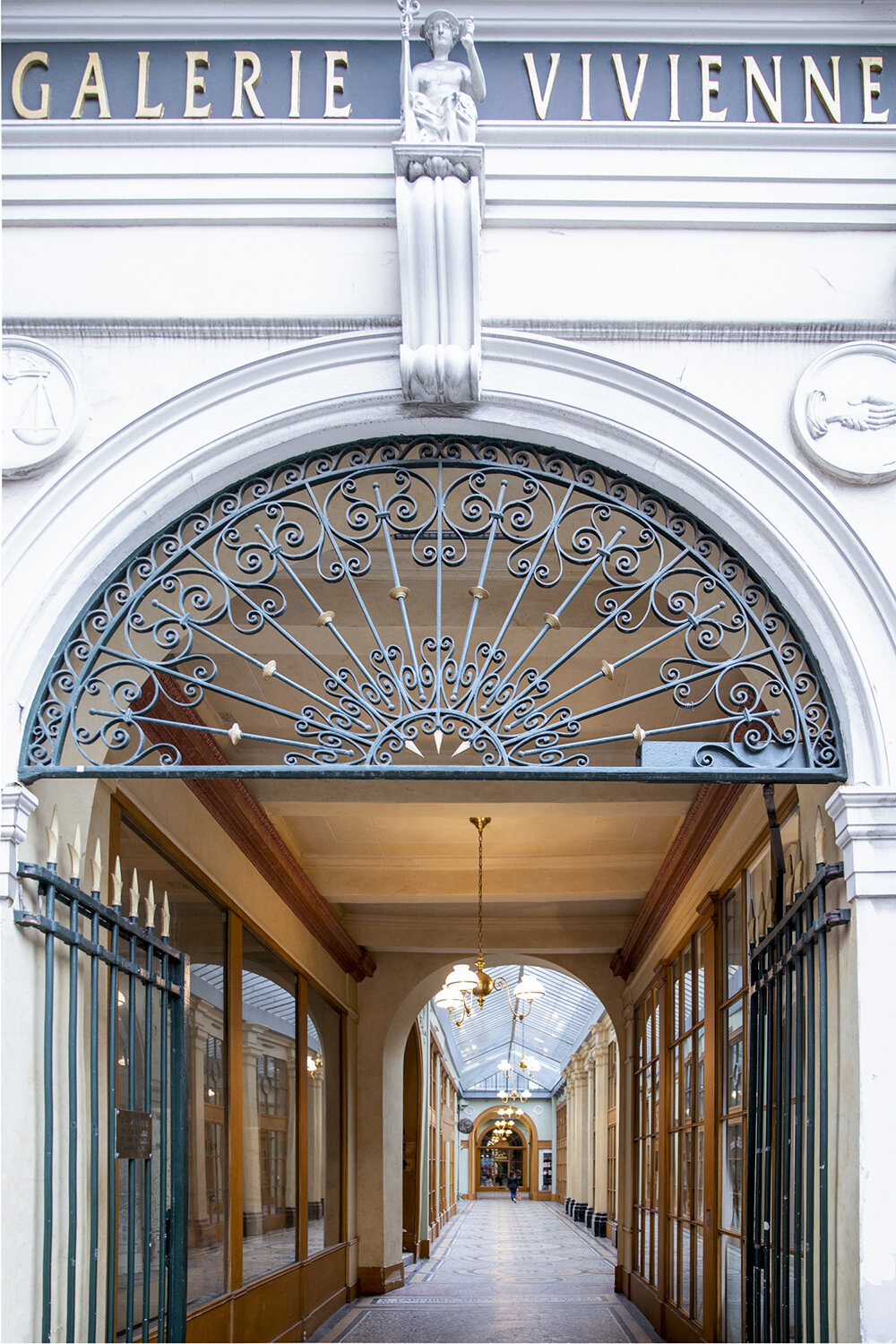
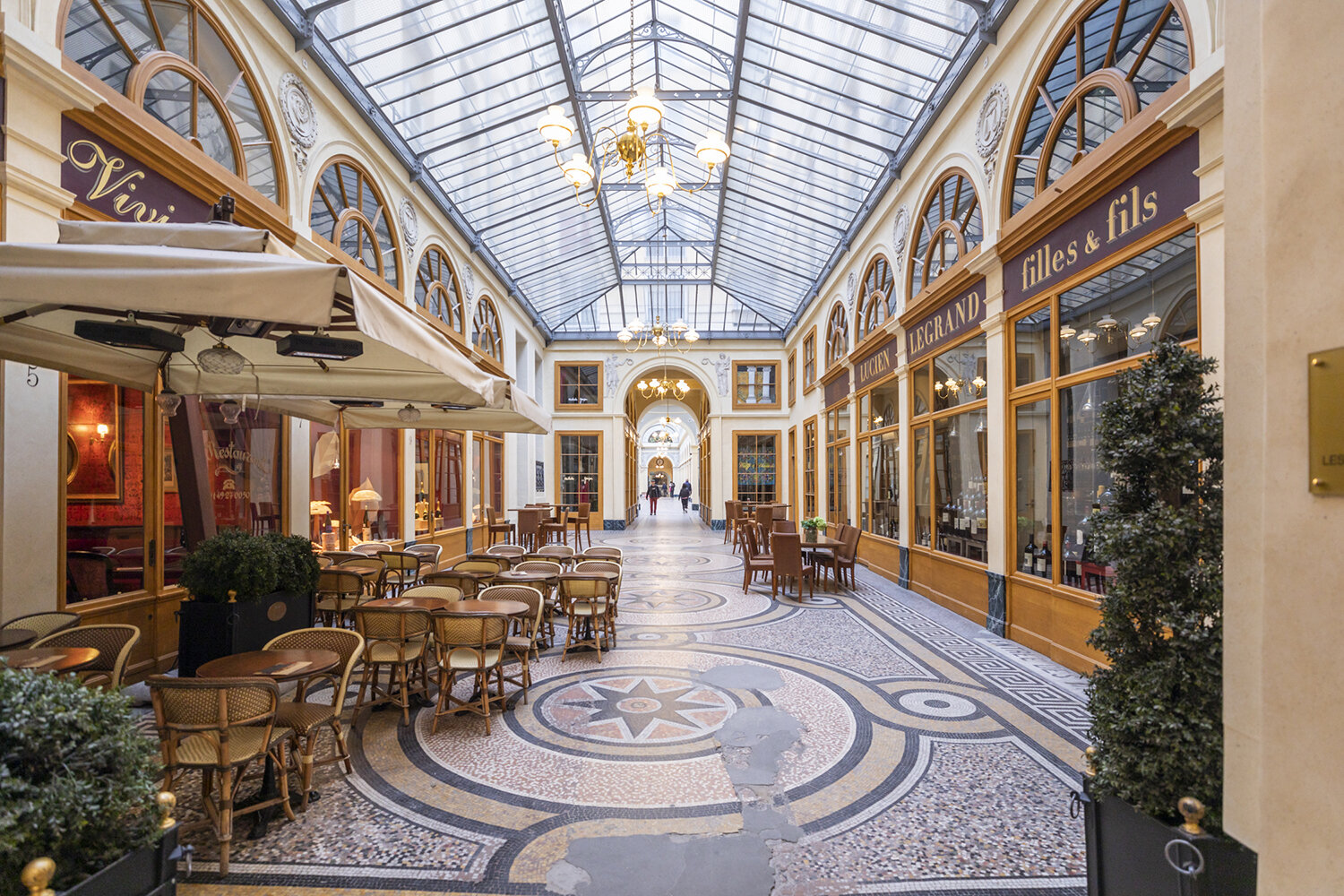
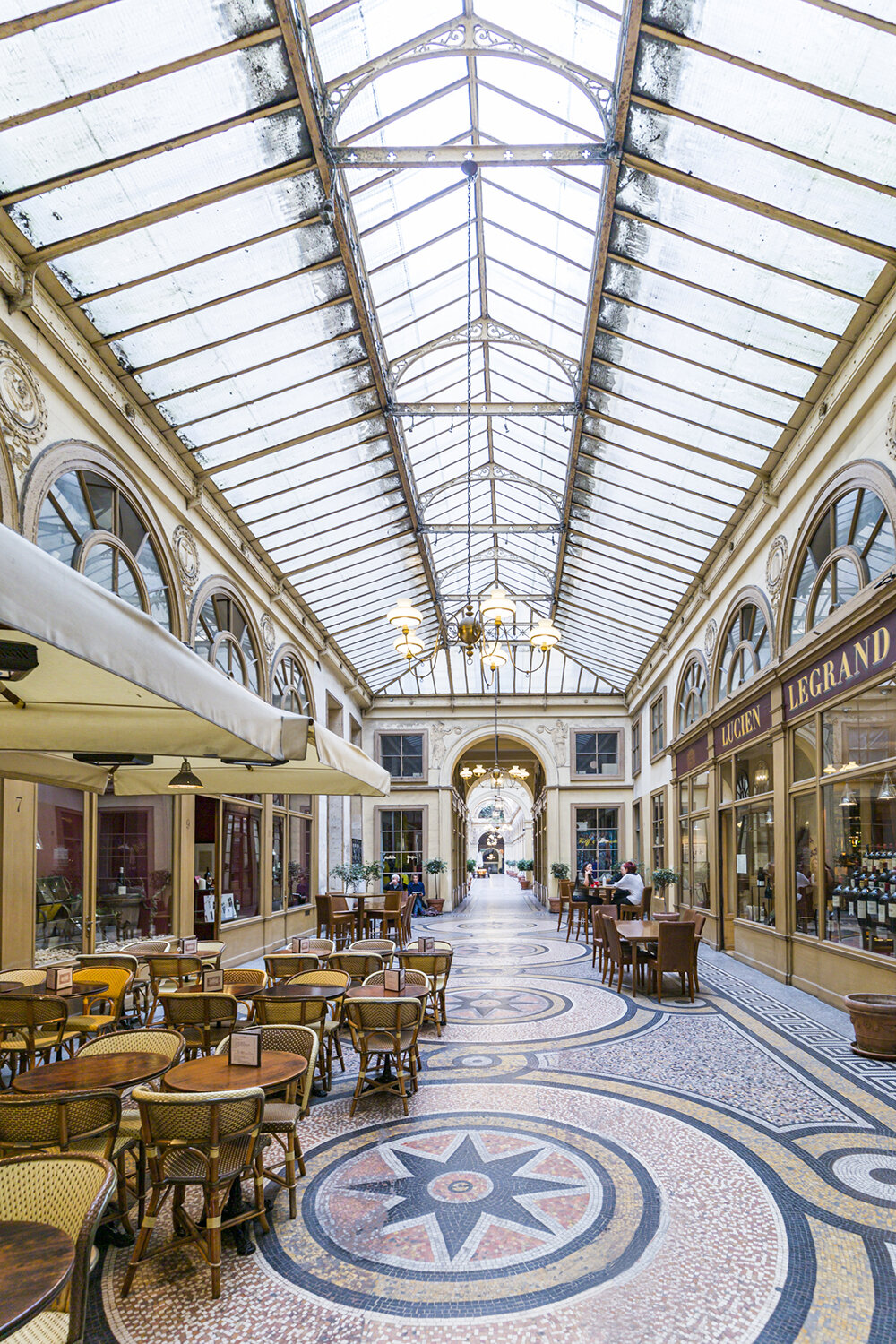
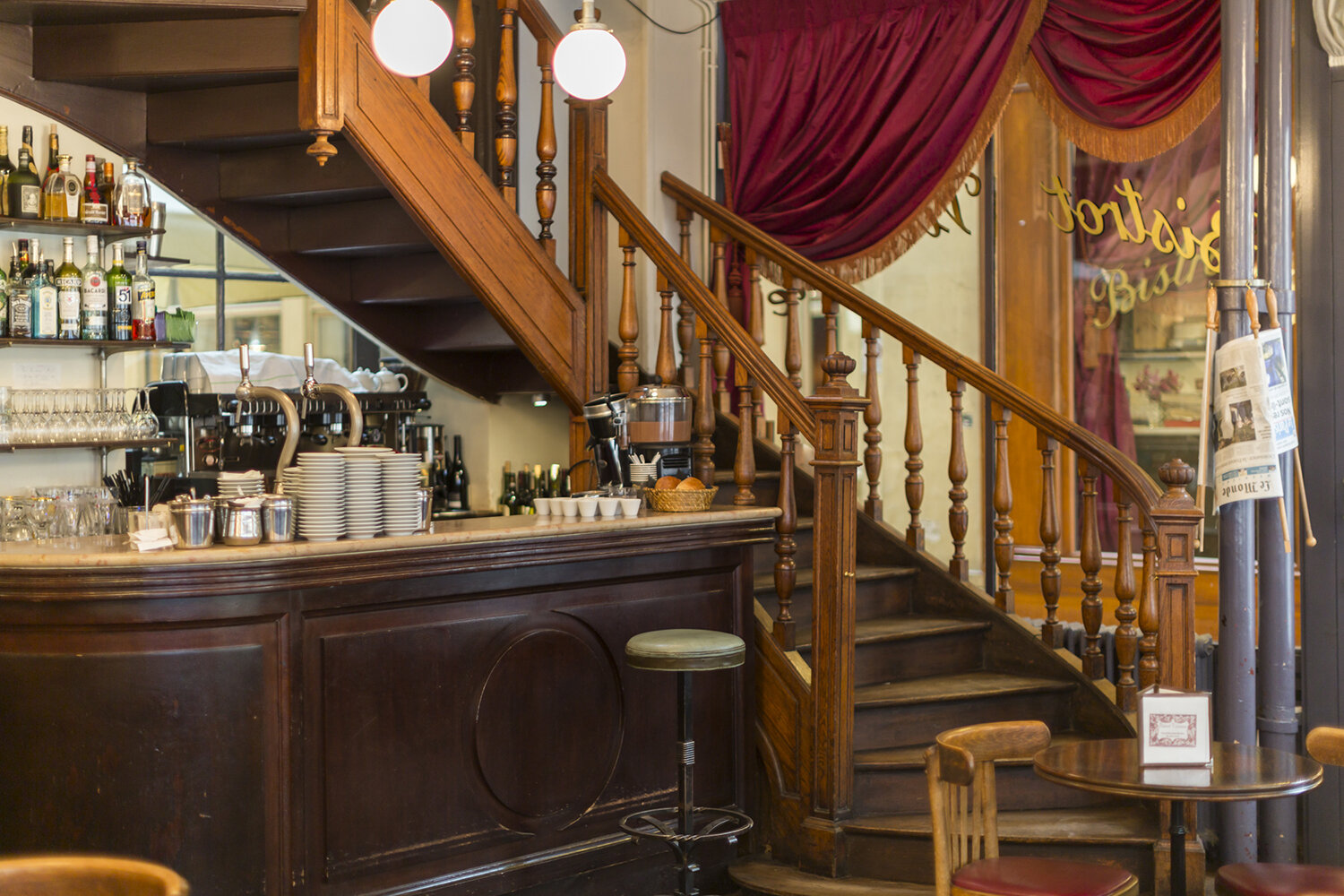
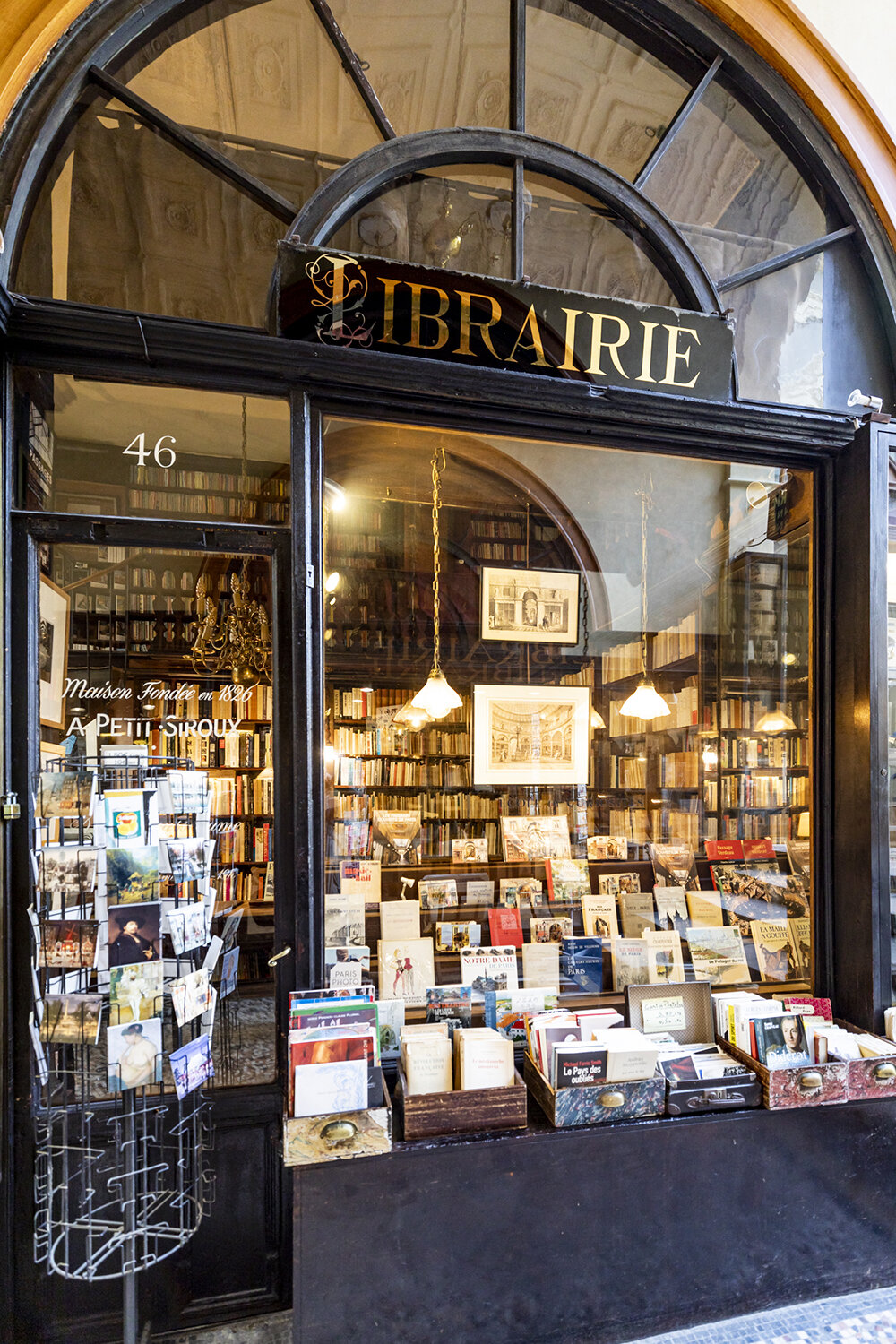
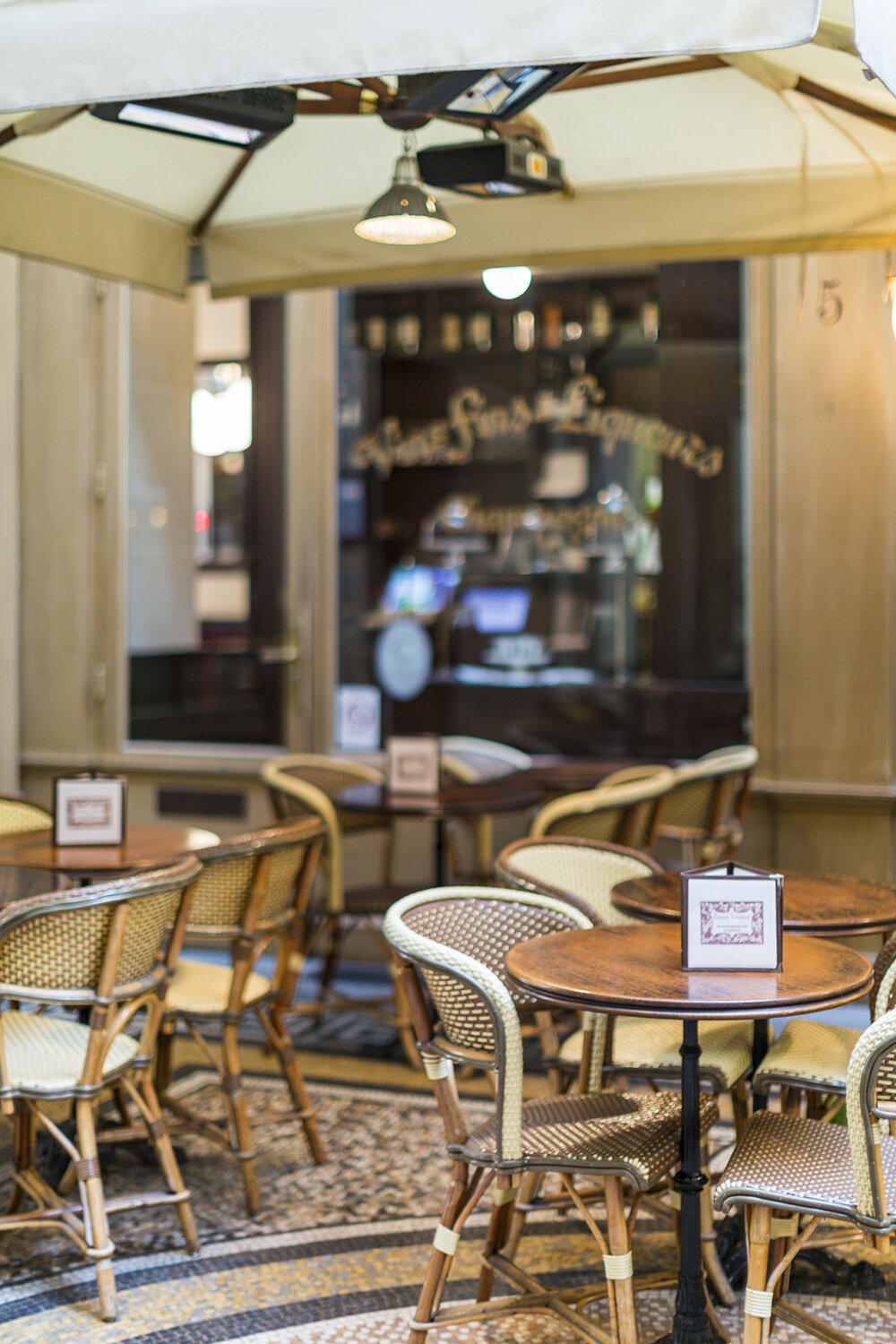
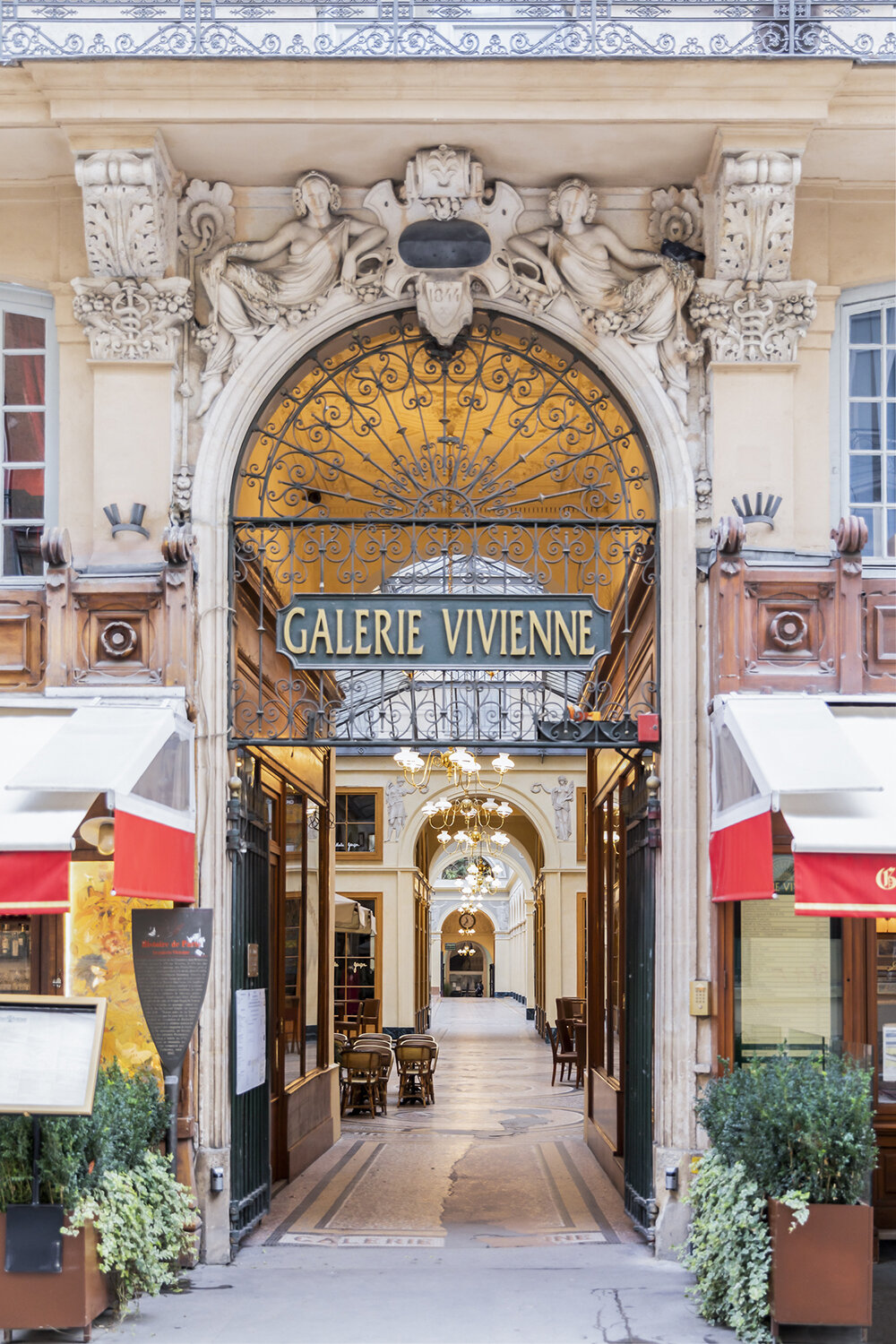

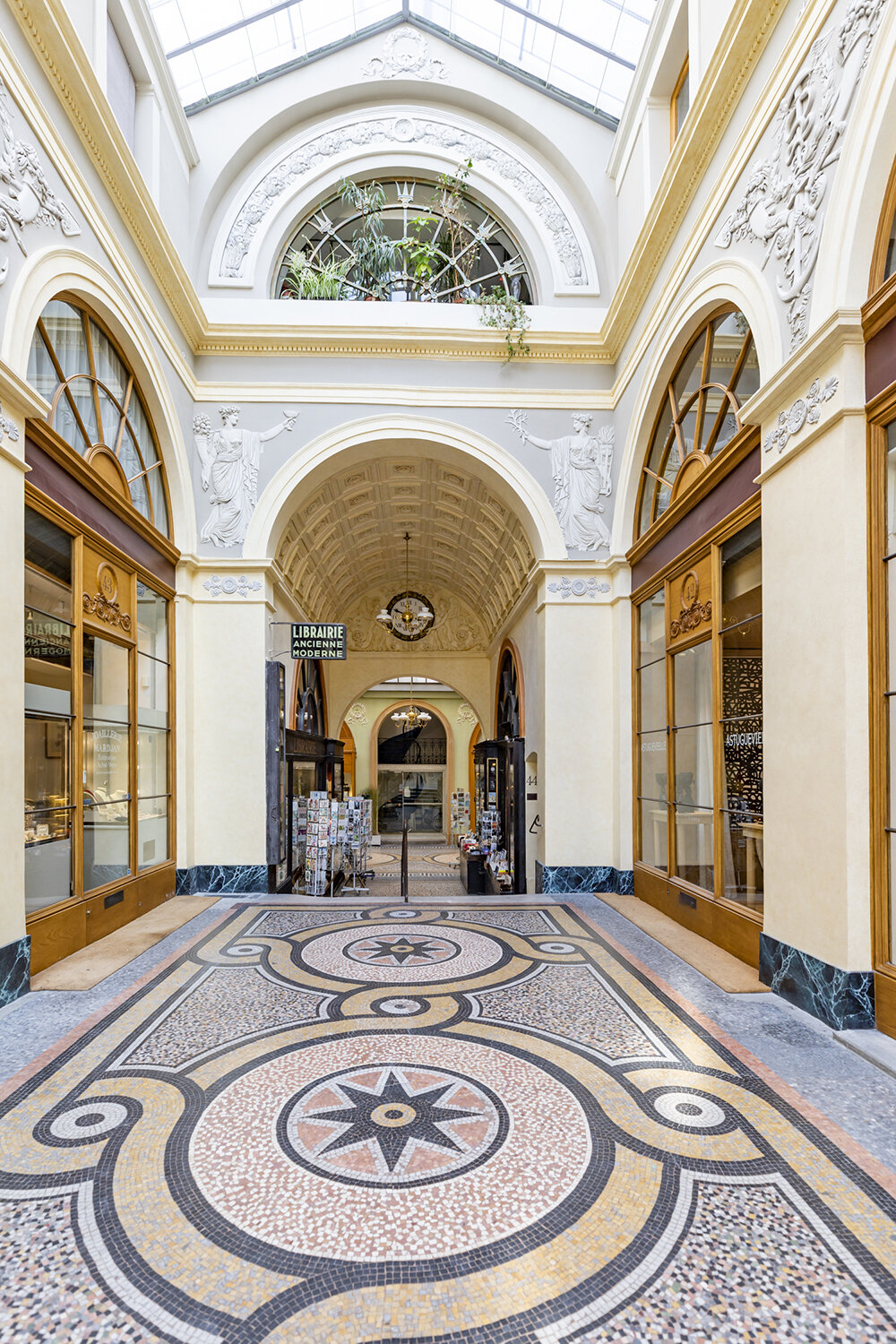
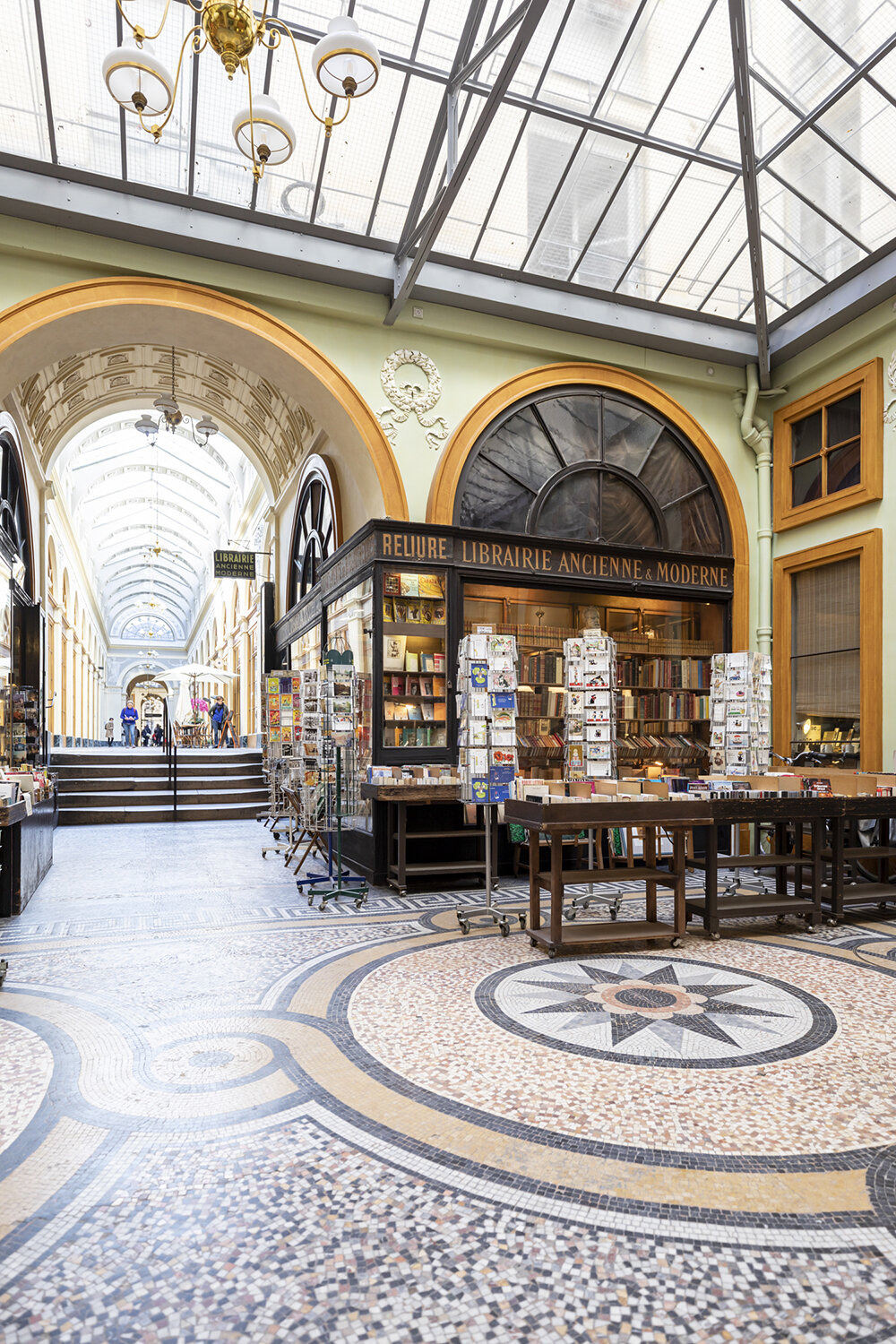
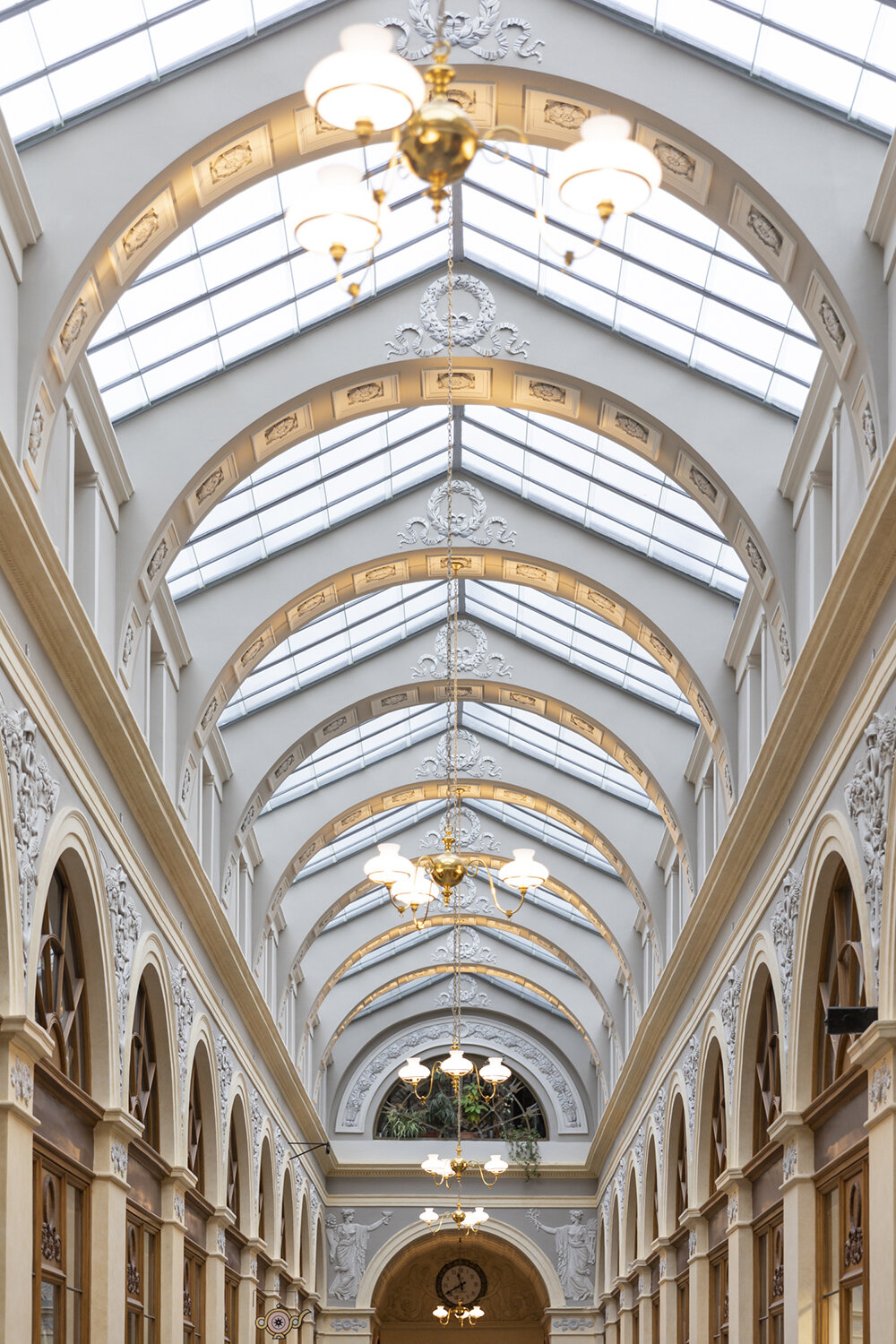
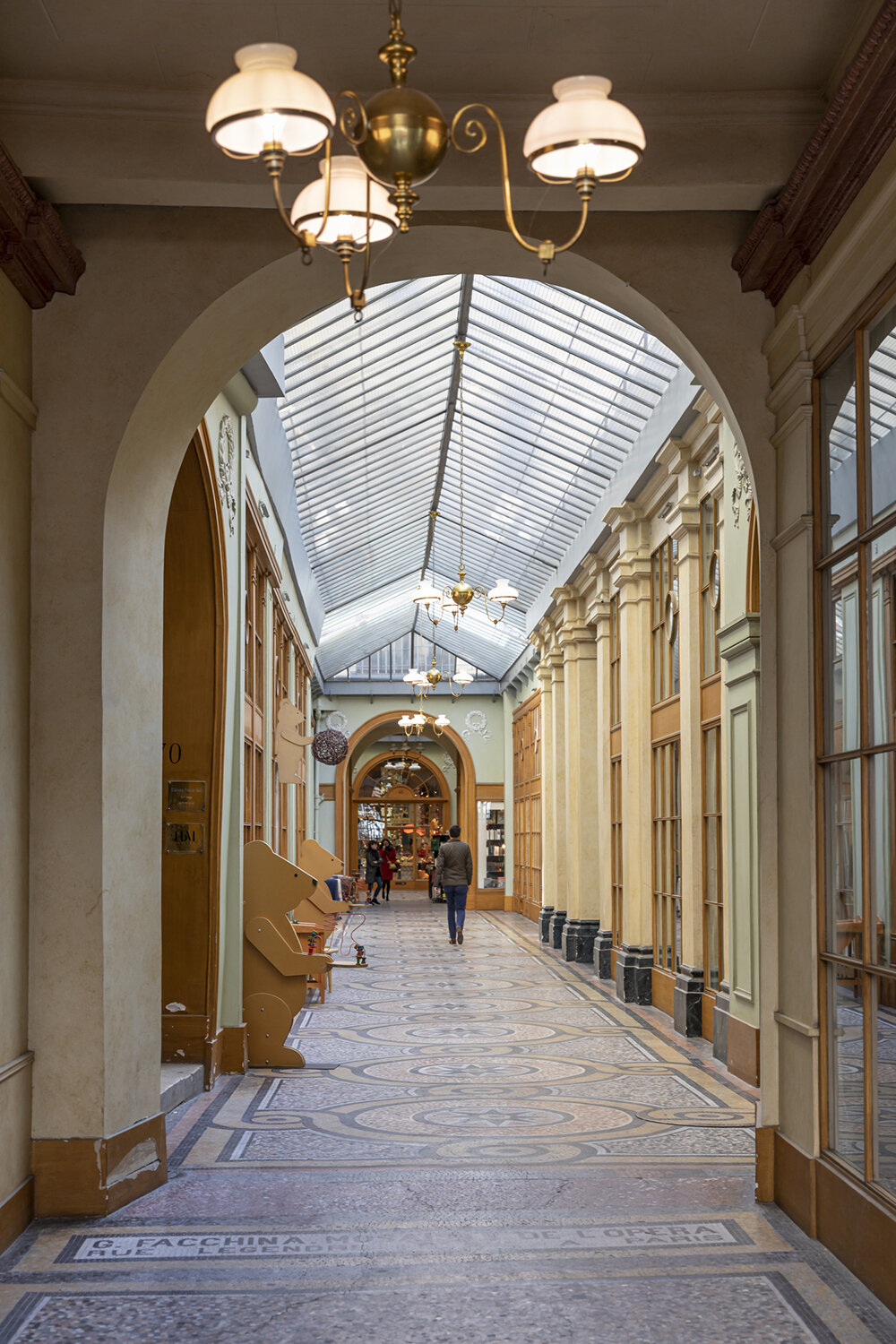
3
PASSAGE DES PANORAMAS
Opened in 1800, the Passage des Panoramas in the 2nd Arrondissement is one of the oldest of the remaining passages in Paris, with one entrance on Boulevard Montmartre and the other on rue Saint-Marc. The Passage des Panoramas is in fact part of a small network of passages including the Galerie Saint-Marc, the Galerie Montmartre and the Galerie des Variétés. It runs parallel to Galerie Feydeau.
The Passages des Panoramas is one of Europe’s first covered commercial passageways or arcades, innovative in that it had glass roofing and, in 1817, gas lighting for illumination. It is also one of the earliest locations of the Paris philatelic trade which still thrives there.
The Passage des Panoramas and the connected arcades are full of life and activity with interesting little shops, cafés, restaurants, and much hustle and bustle, particularly in the middle of the day.

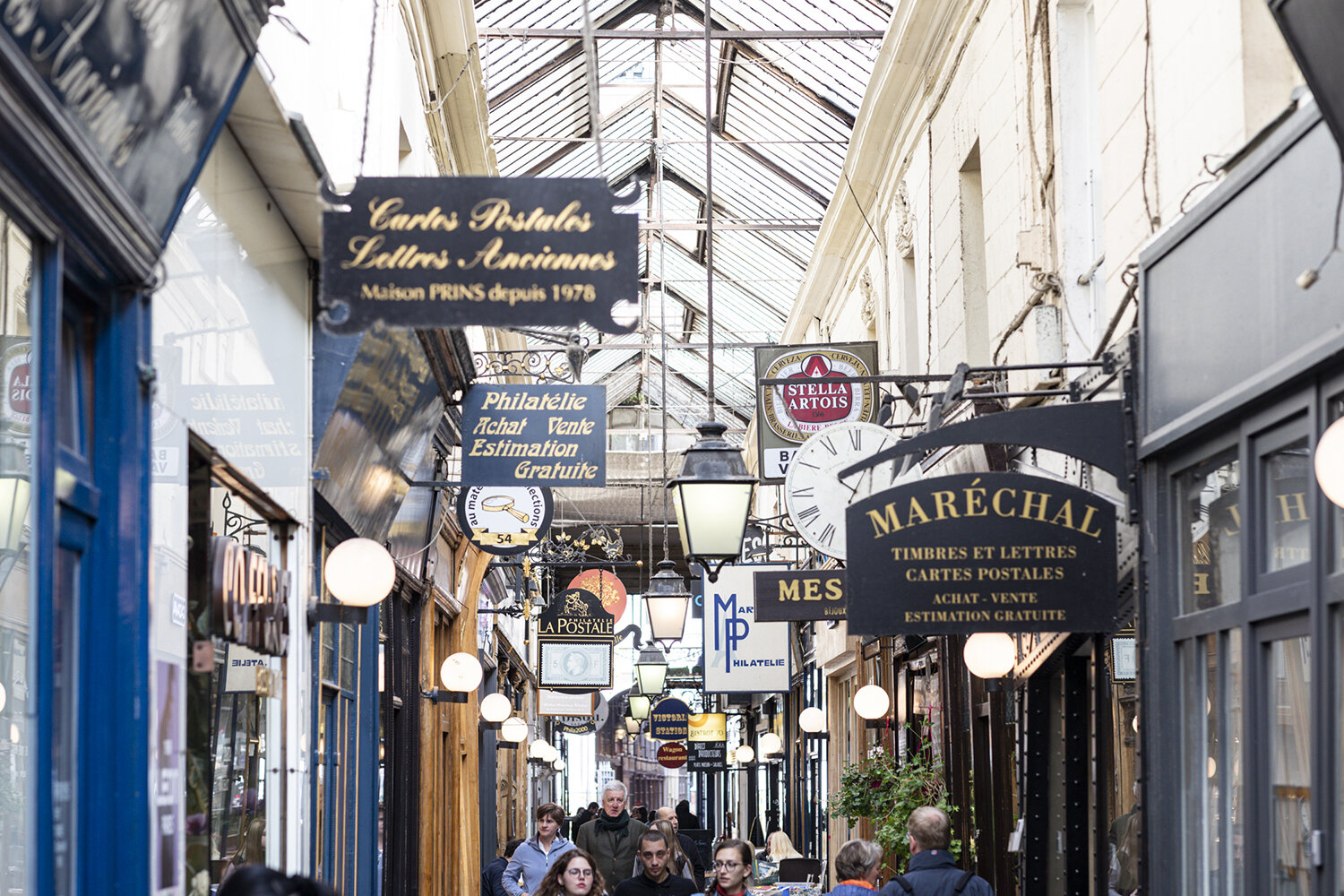
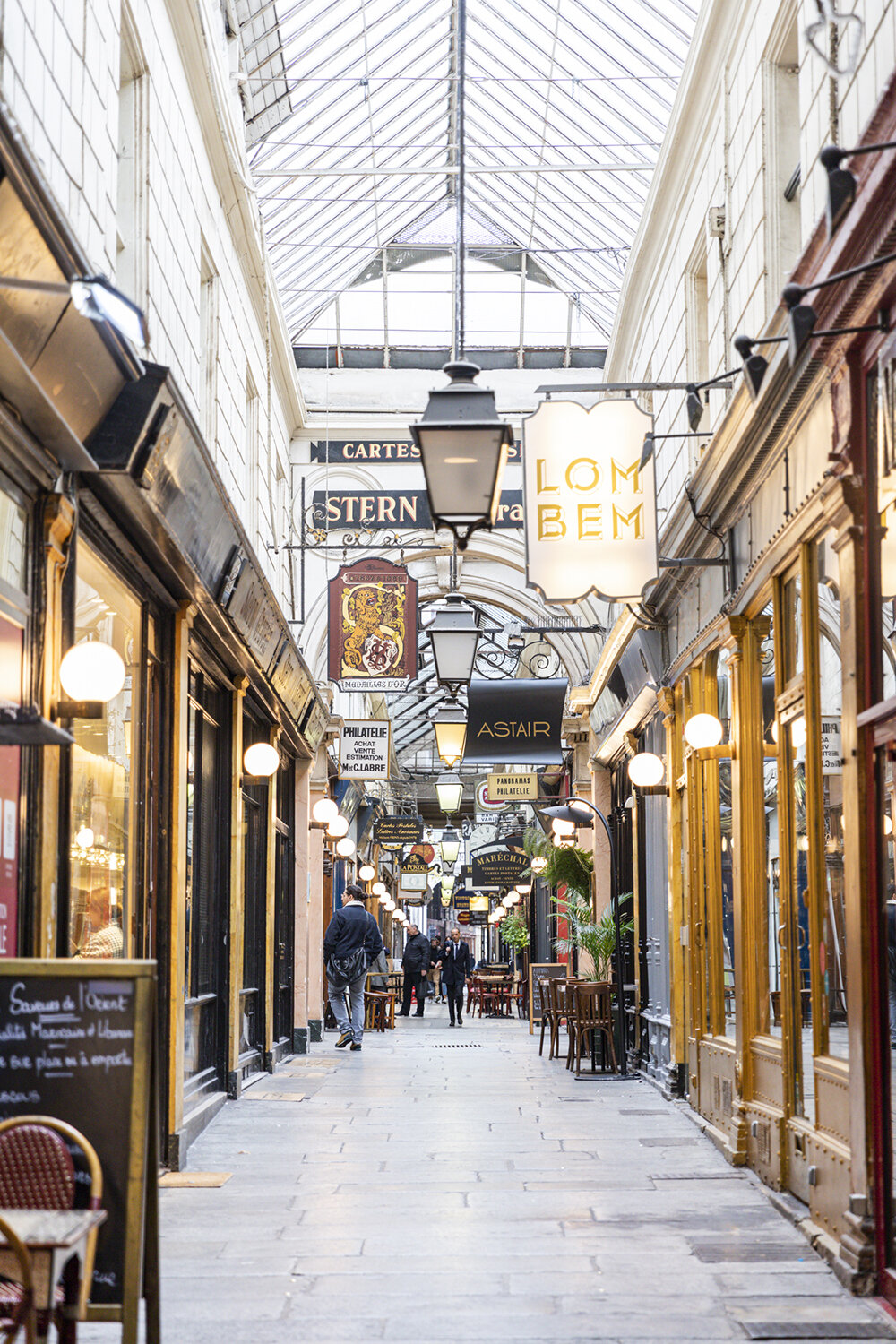
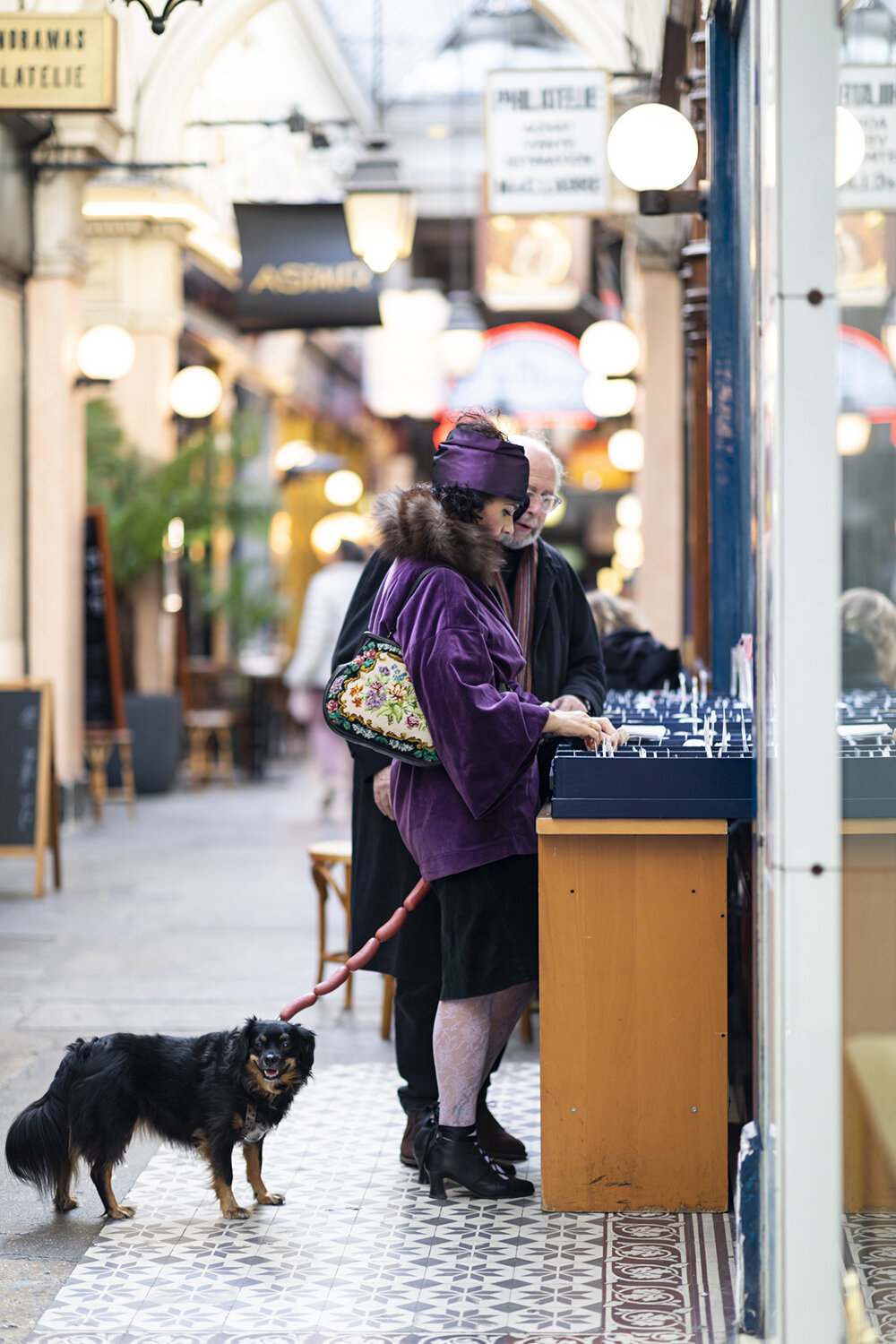
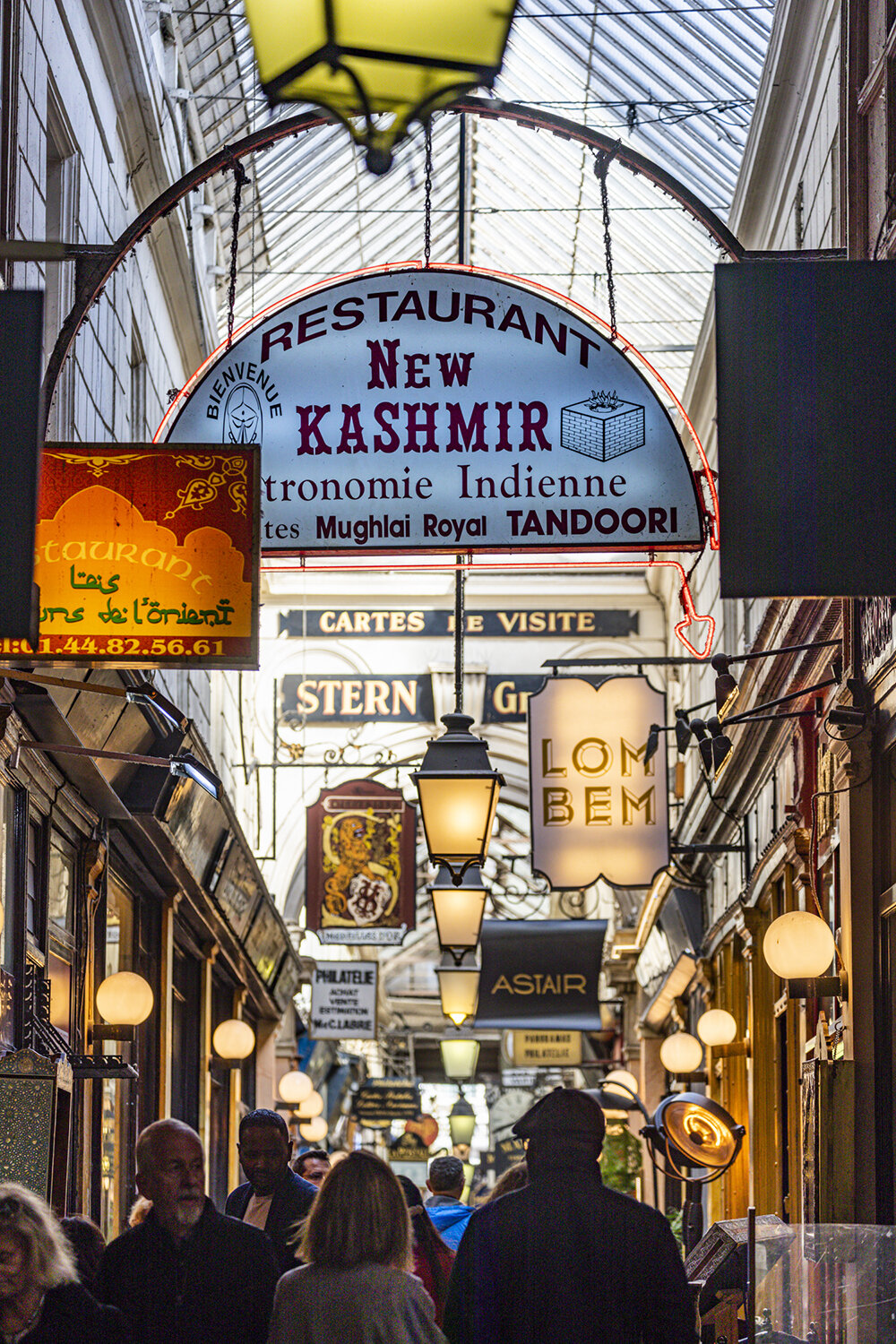

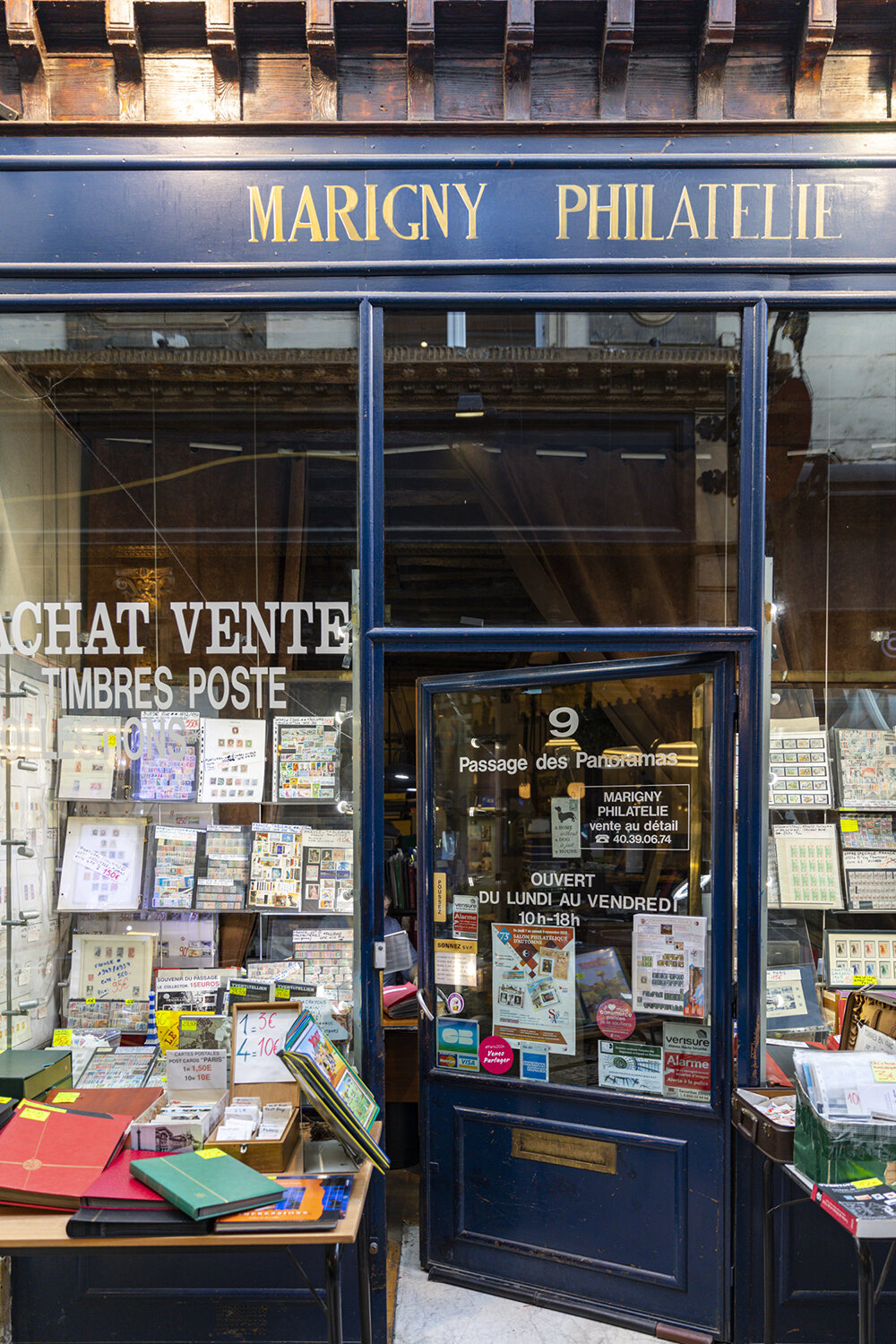
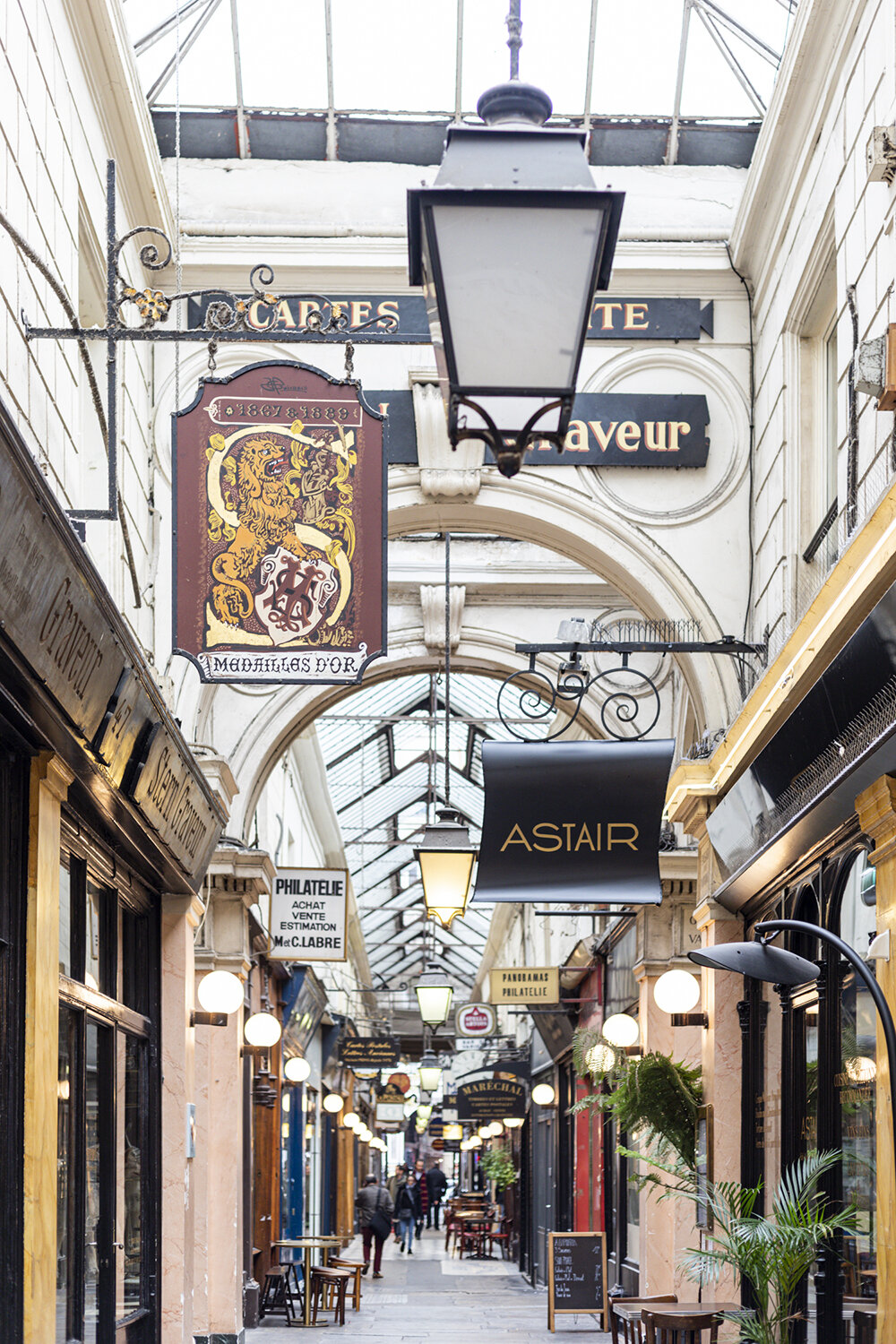
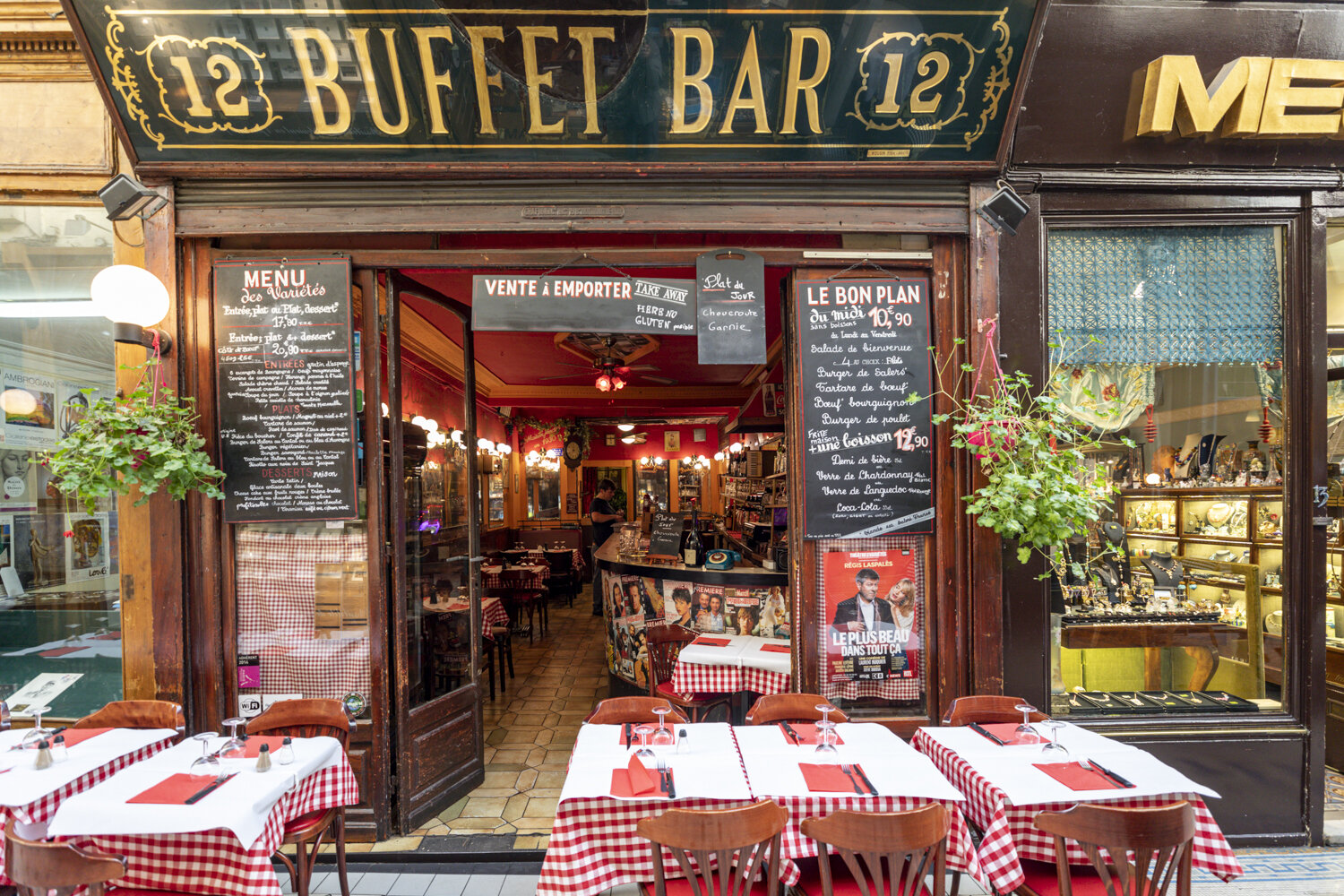
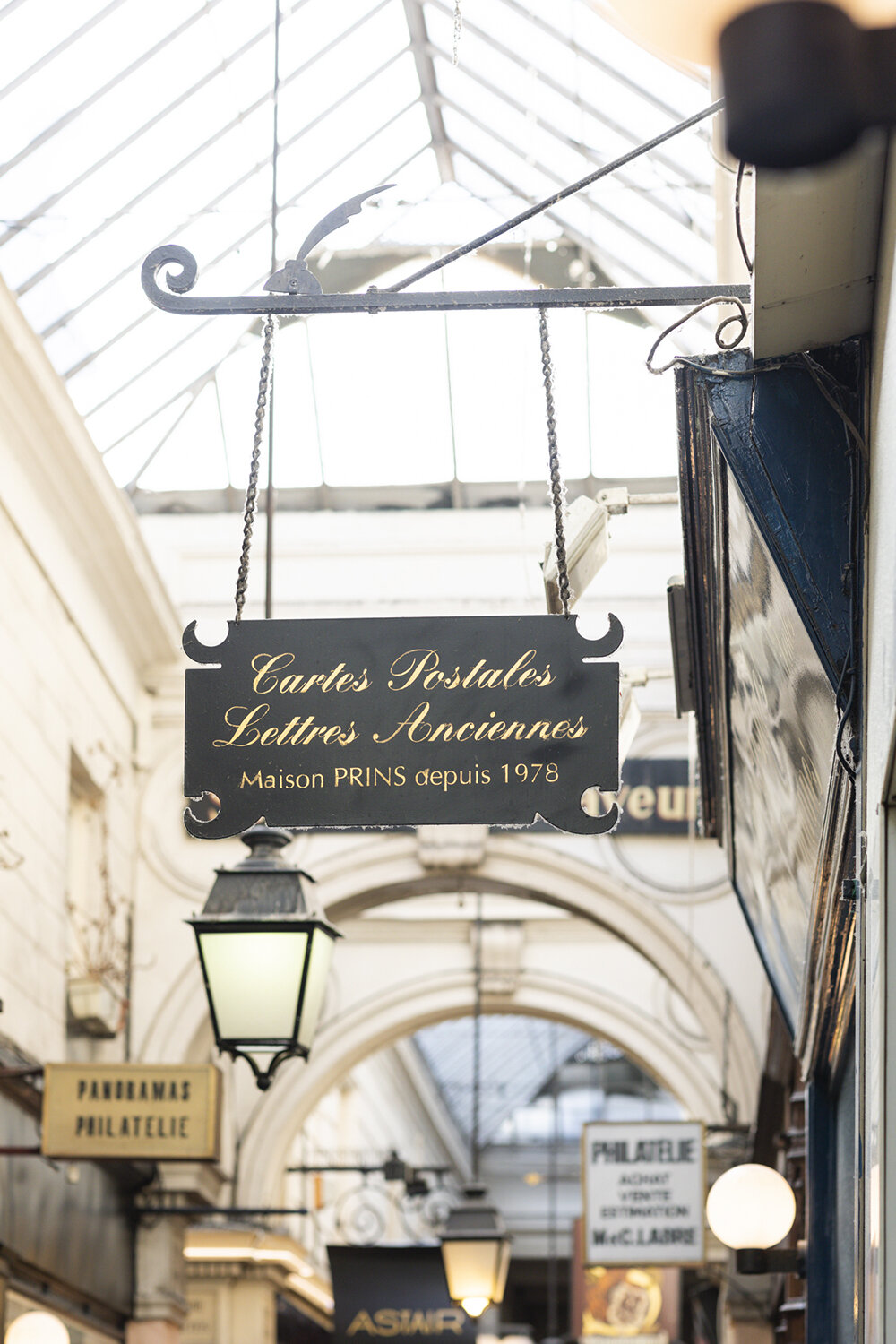
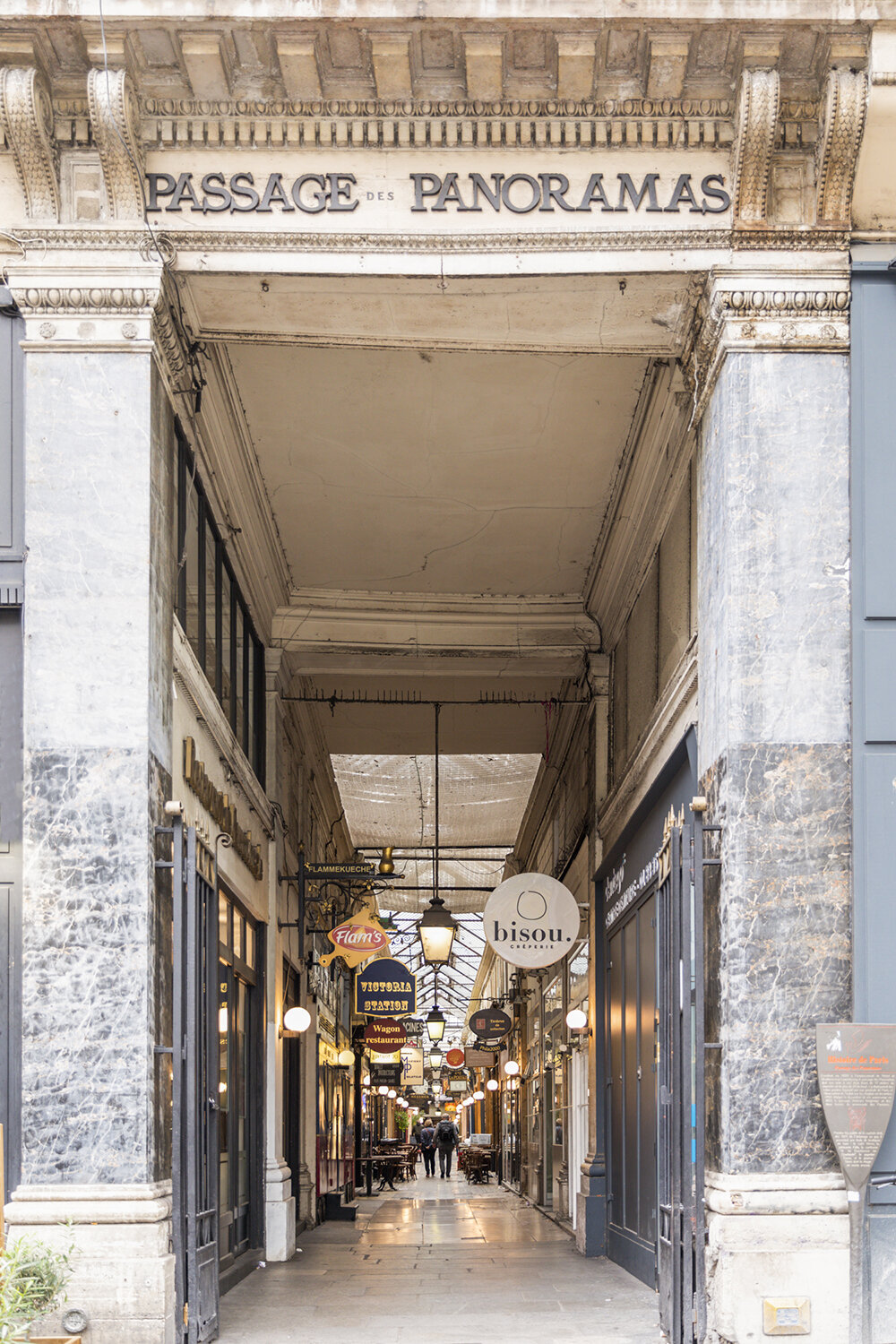
GALERIE DES VARIÉTÉS
As mentioned. the Passage des Panoramas is part of a small labyrinth of passages. An example of one of them is Galerie des Variétés, so called because the historic Théatre des Variétés stands at one end of it. A short galerie, it exits onto rue Vivienne.
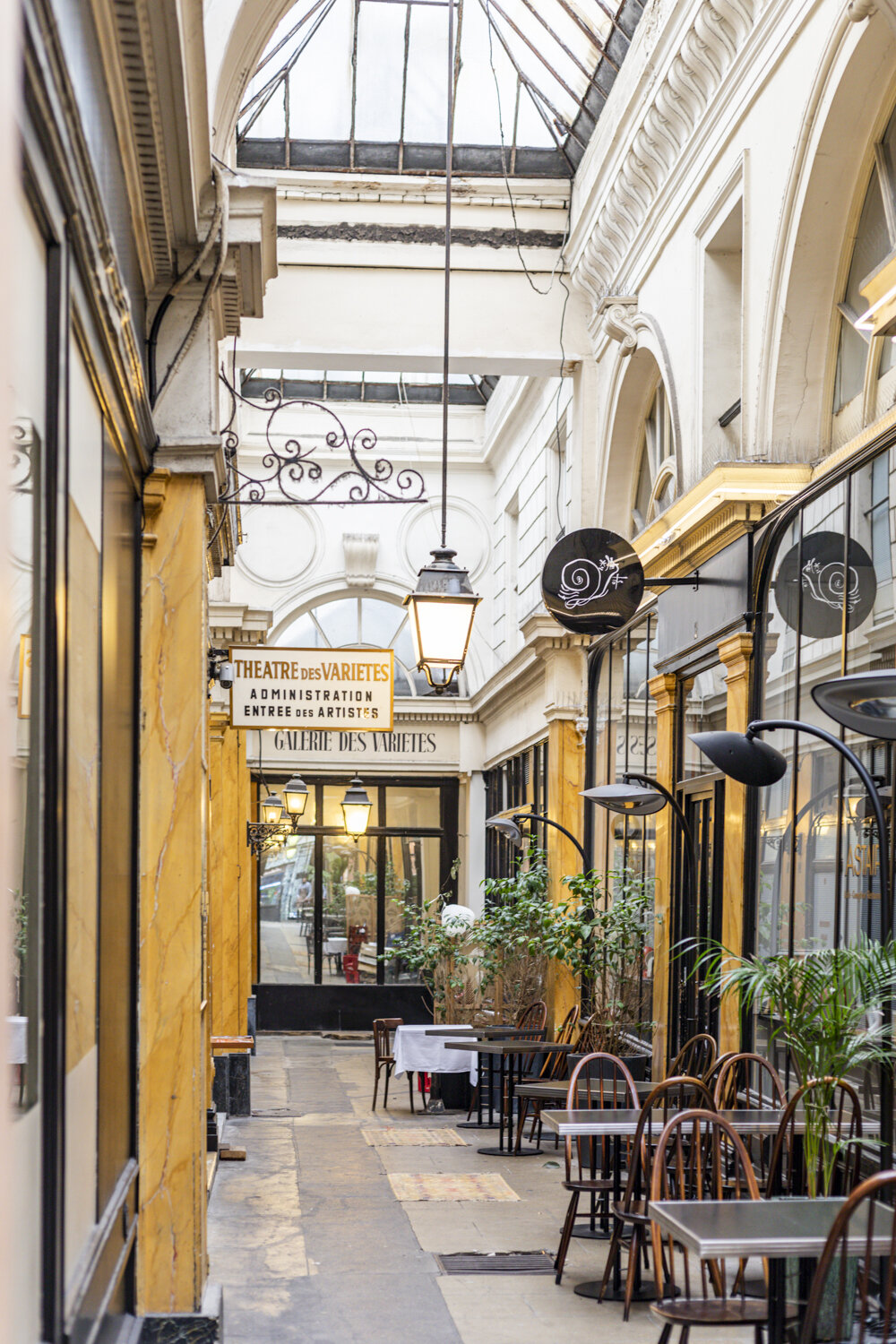
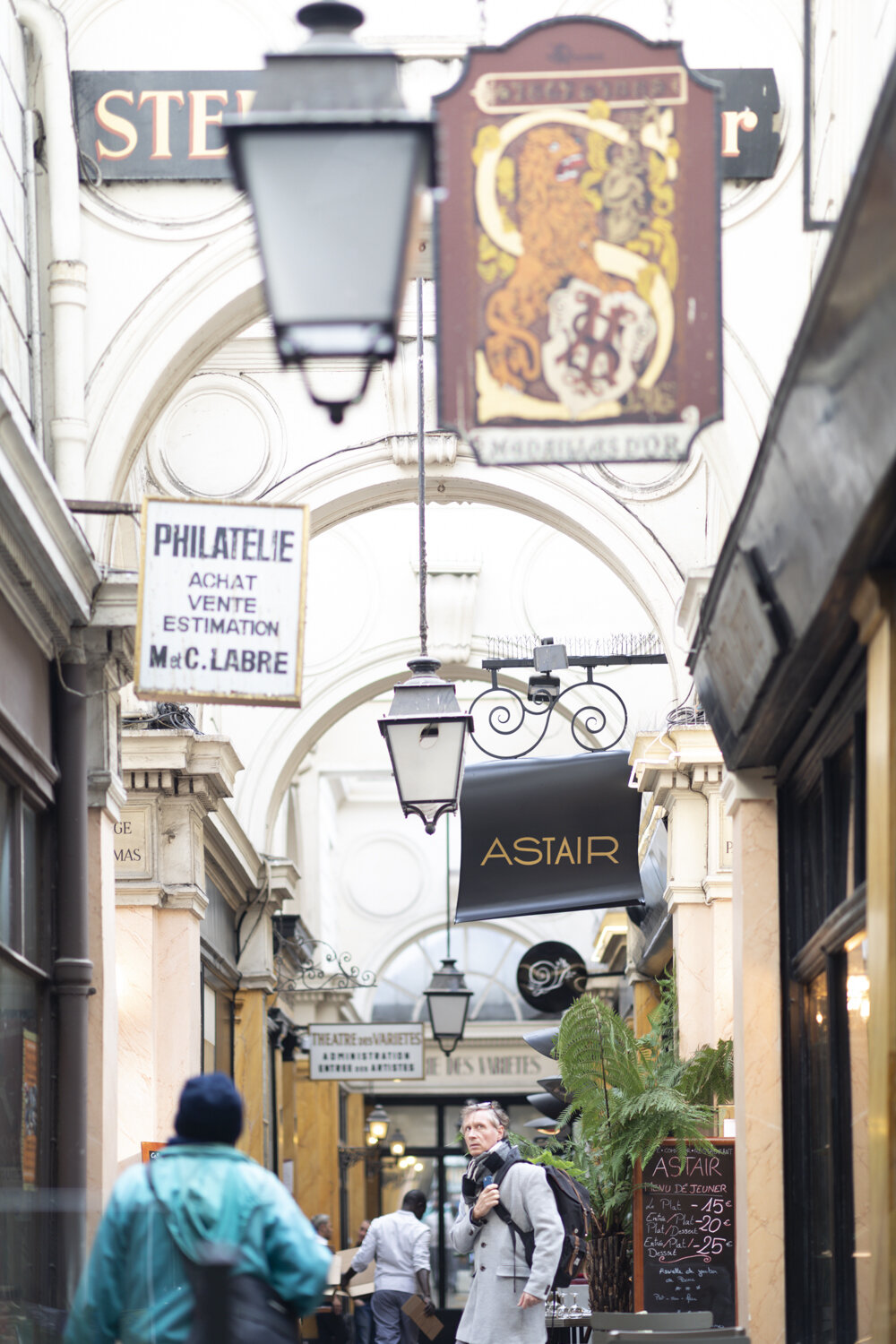
4
PASSAGE JOUFFROY
When you exit Passage des Panoramas onto Boulevard Montmartre, directly across the street in the 9th Arrondissment is the entrance to Passage Jouffroy. It was built in 1845 as an extension to the Passage des Panoramas, in an attempt to share in that arcade’s clear success. Passage Jouffroy threads its way with a jog and a set of steps by the Hotel Chopin and the Musée Grevin wax museum, and continues on to rue de la Grange-Batelière. The arcade is noted for a beautiful glass canopy and tiled floor, lined with wonderful and fascinating shops, and charming cafés, as well as the museum and hotel already mentioned.
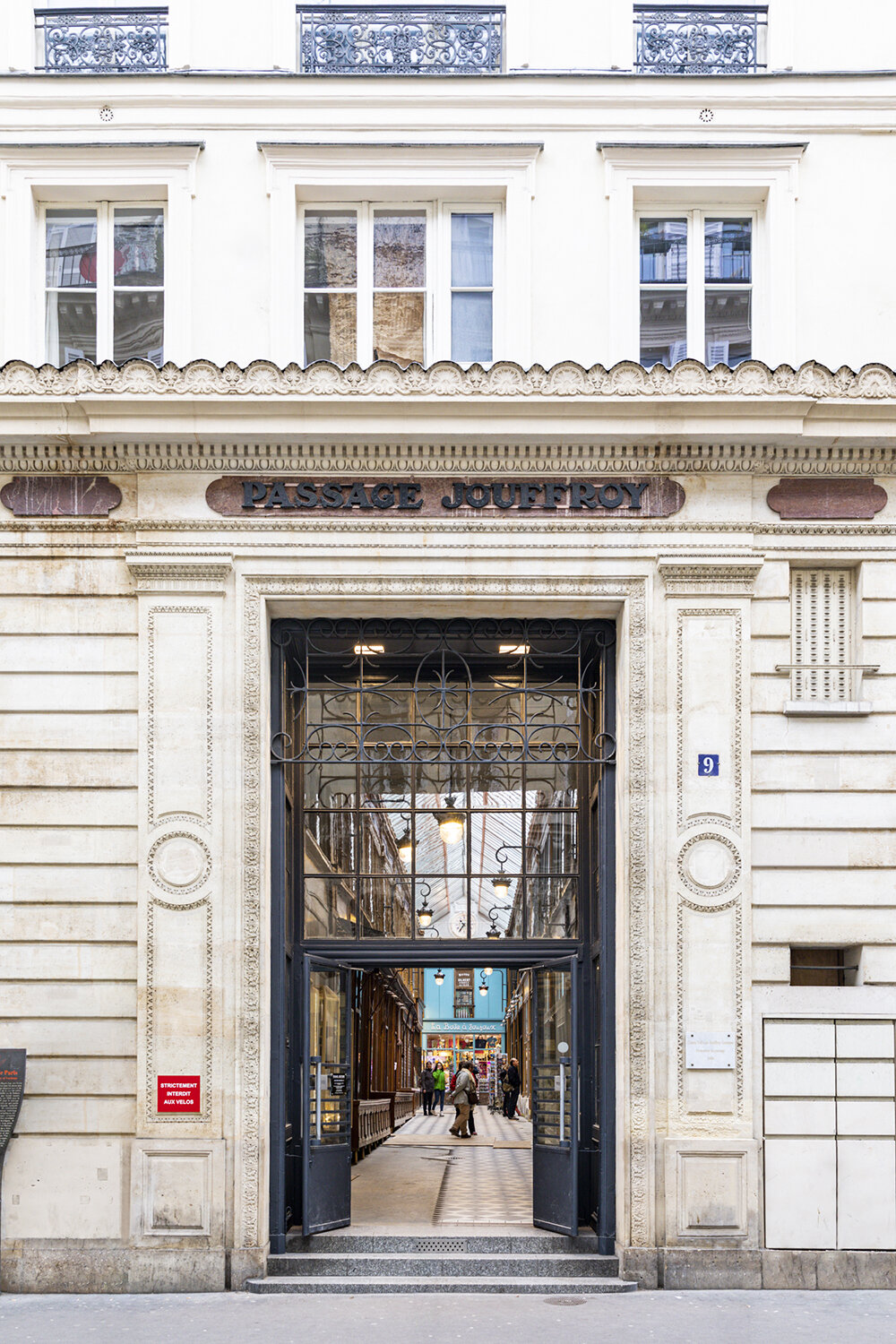
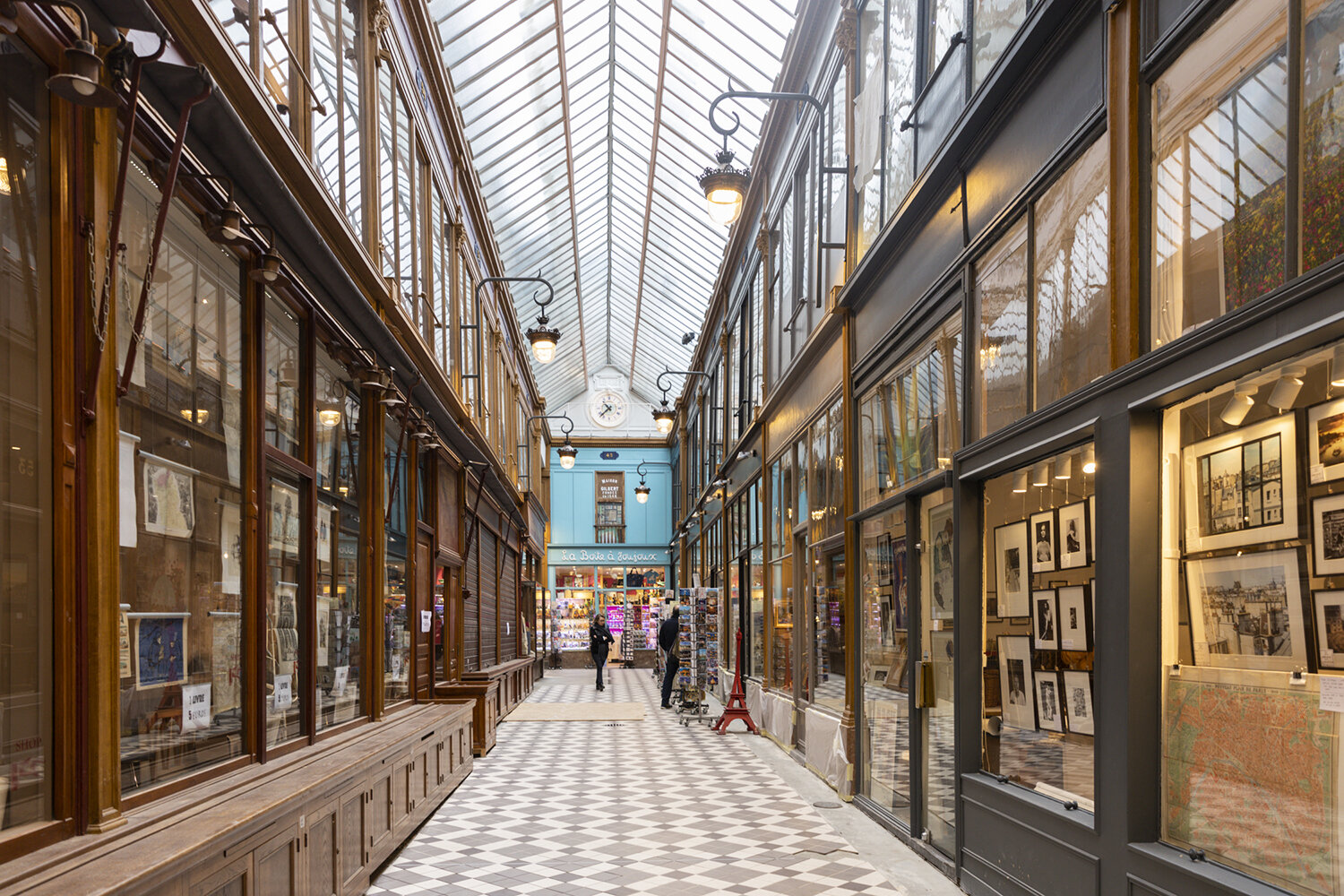
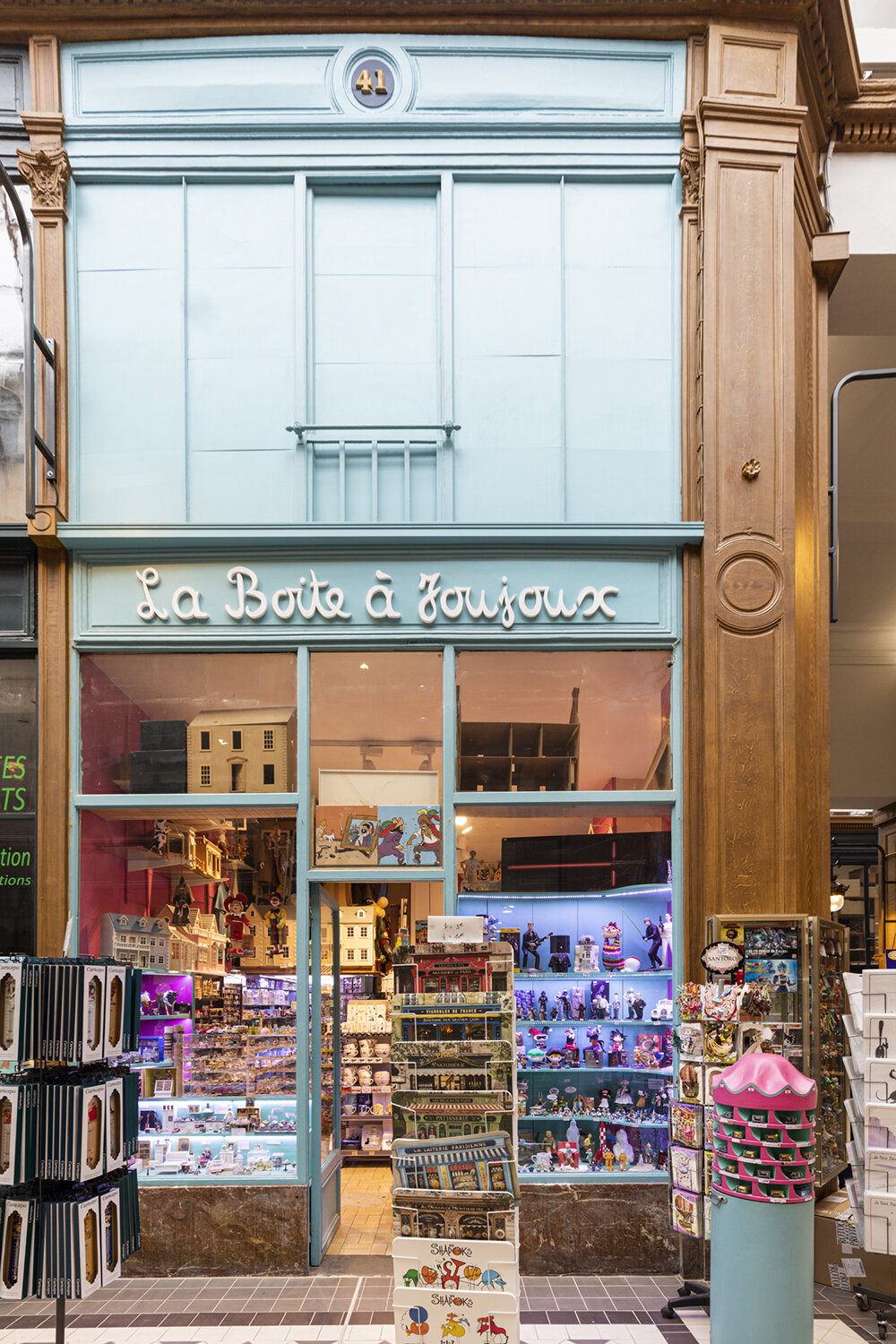
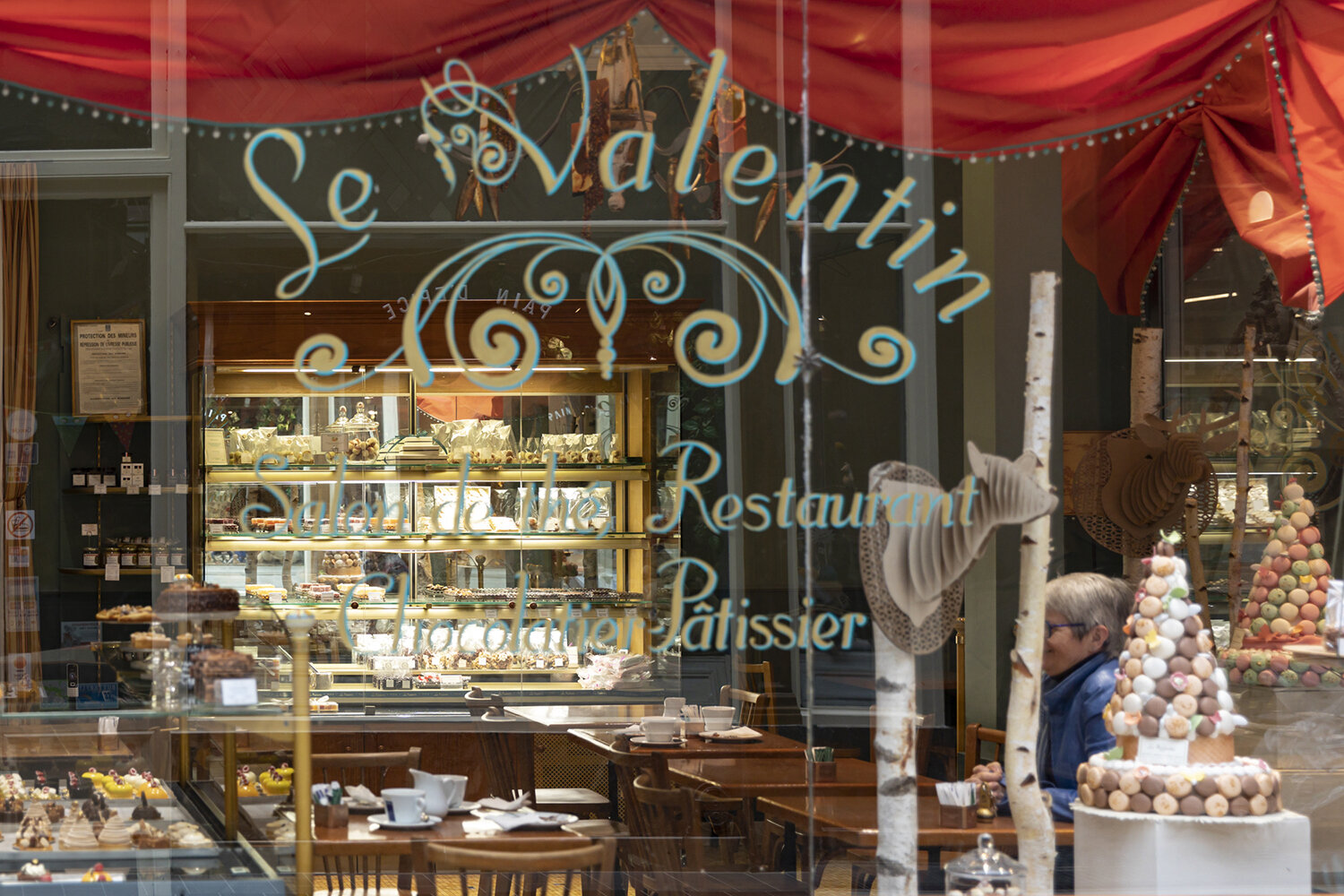
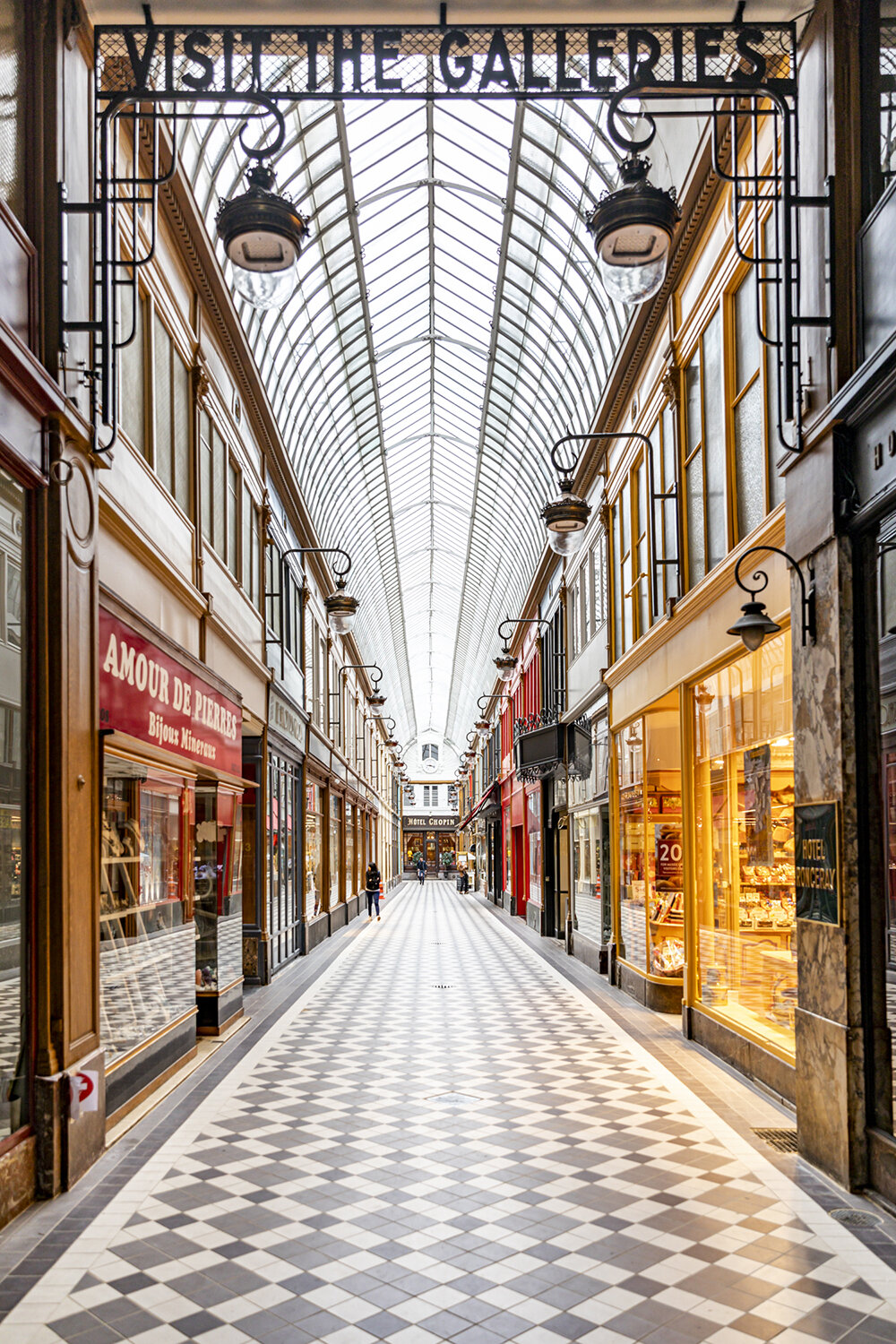
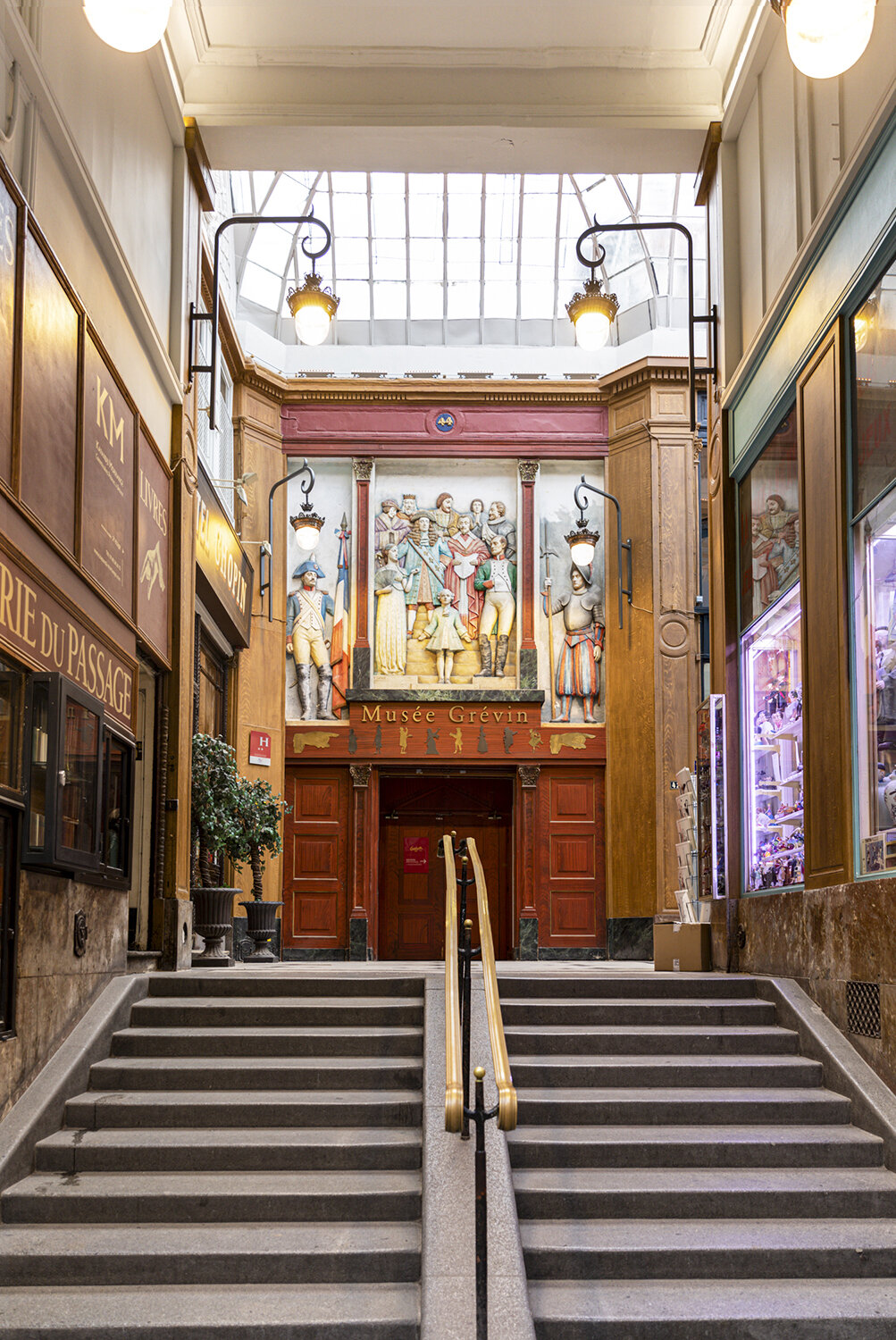
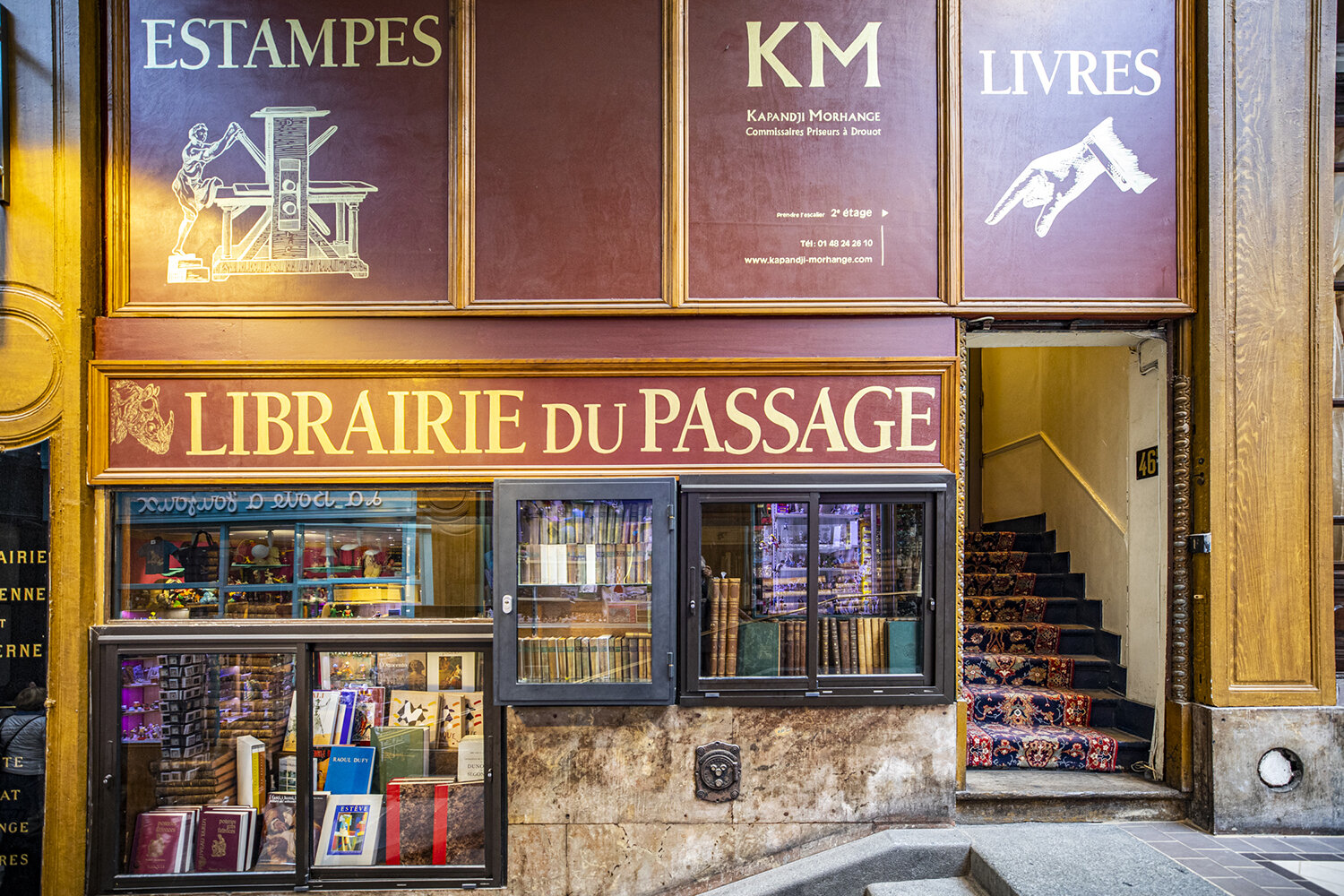
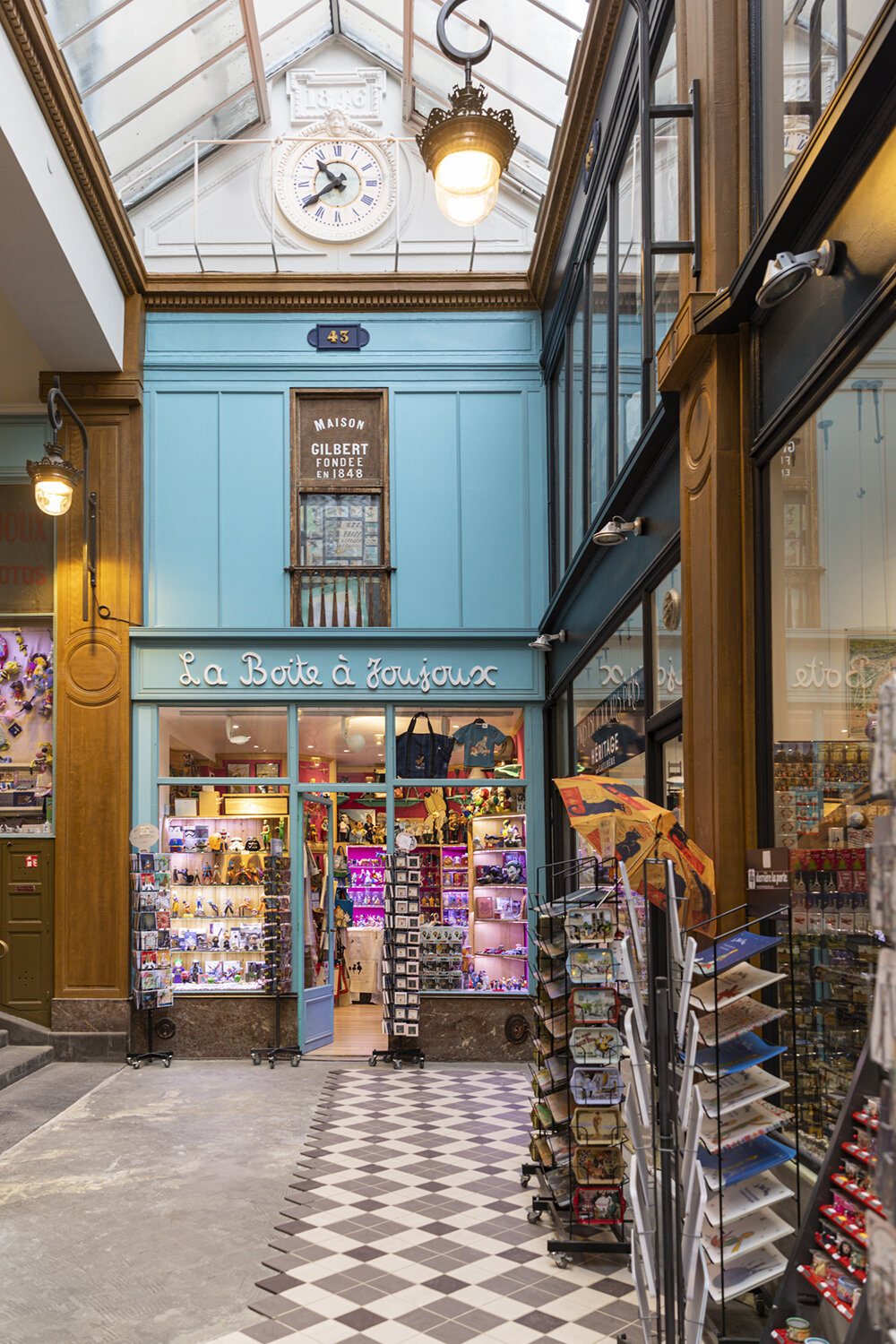
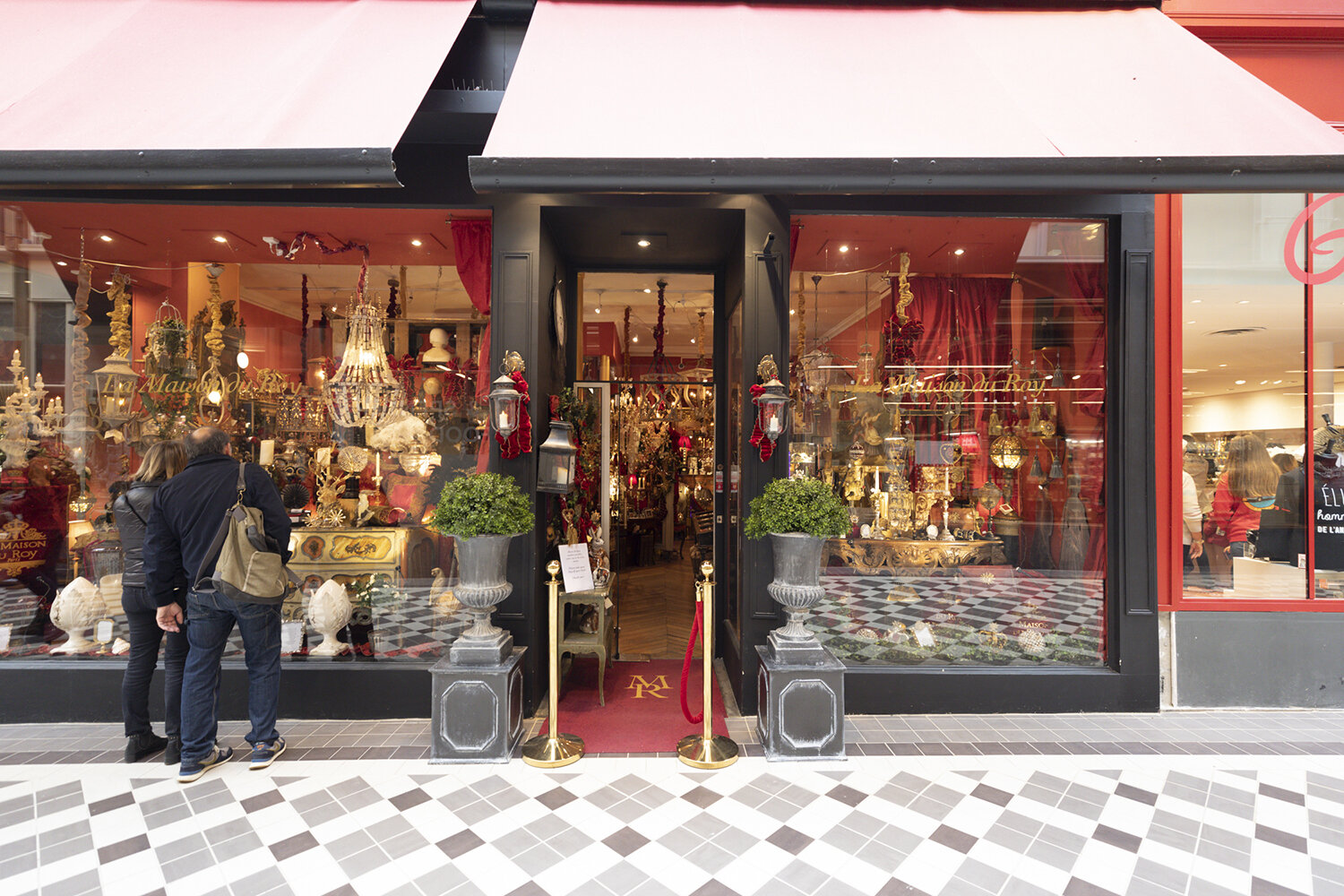
5
PASSAGE VERDEAU
Also in the 9th, across the street from the exit to Passage Jouffroy, is the entrance to Passage Verdeau, an extension of the former arcade built by the same consortium and, like Passage Jouffroy, named after one of its members. Constructed in 1846, its entrance is on rue de la Grange-Batelière, and it exits onto rue du Faubourg-Montmartre.
6
PASSAGE CHOISEUL
Built between 1826 and 1827 in the 2nd Arrondissement, connecting Rue Sainte-Anne and rue Dalayrac, is Passage Choiseul, which has the same lost-in-time feeling that you find in the Passage des Panoramas.
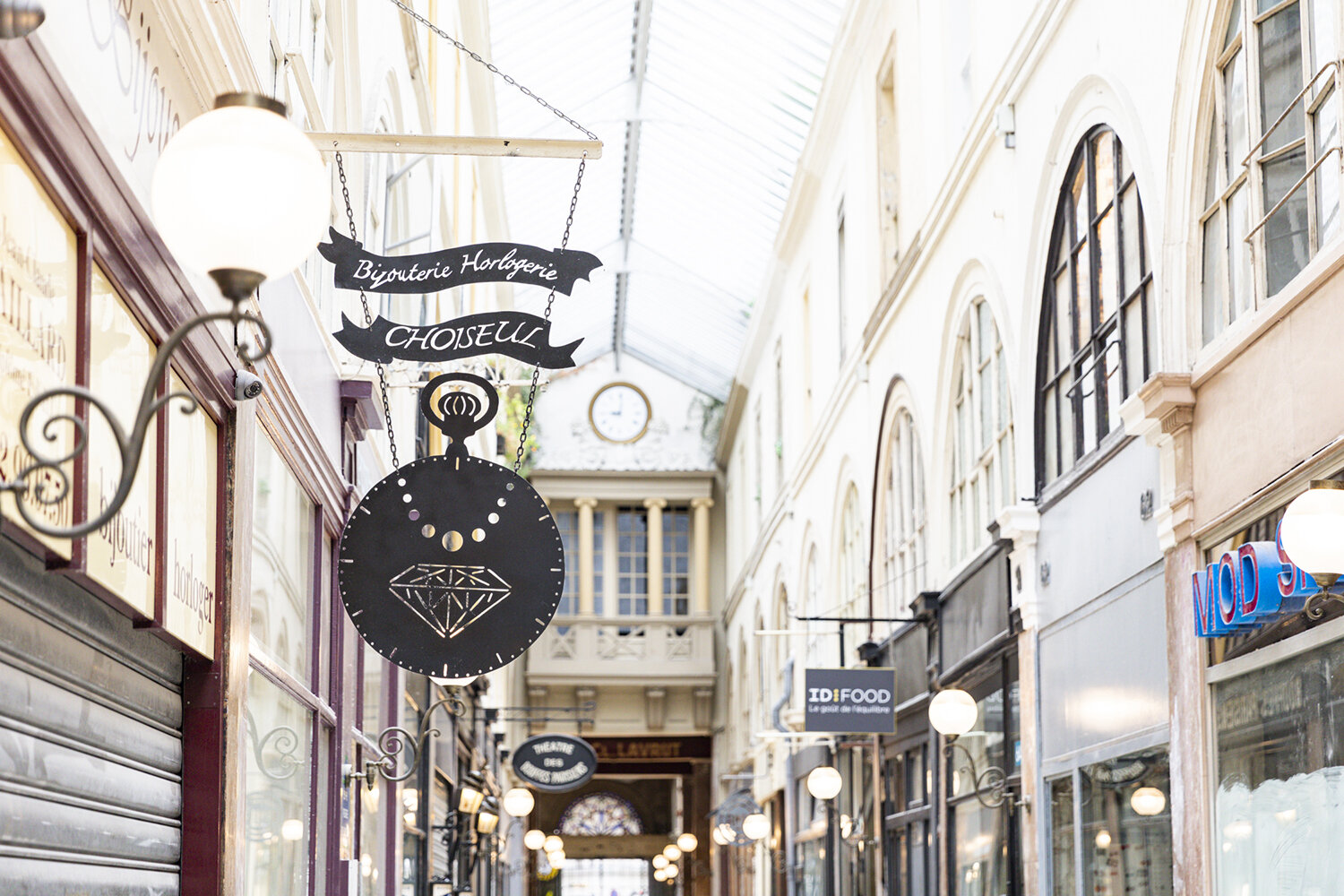

7
PASSAGE DU GRAND CERF
Also in the 2nd Arrondissement, not far from rue Montorgueil but off the tourist path, Passage du Grand Cerf is named after the wooden cerf (stag’s head) in the alley. This arcade runs between Rue Saint-Denis and rue Dussoubs and has a majestic, 12-meter high glass and iron canopy and an elegant tiled floor. Opened in 1827, today the Passage du Grand Cerf is lined with small designer outlets and jewelry shops.
8
PASSAGE DU BOURG L’ABBÉ
As you exit the Passage du Grand Cerf, directly across rue Saint-Denis you can step straight into the Passage du Bourg L’Abbé, built in 1828, which exits at its other end onto rue de Palestro.
9
PASSAGE PUTEAUX
Paris’s shortest arcade, Passage Puteaux connects rue Pasquier and rue de l’Arcade, a continuation of rue Tronson du Coudray. It was built in 1839 and was a failed venture from its inception. However, there it stands and is in daily use.
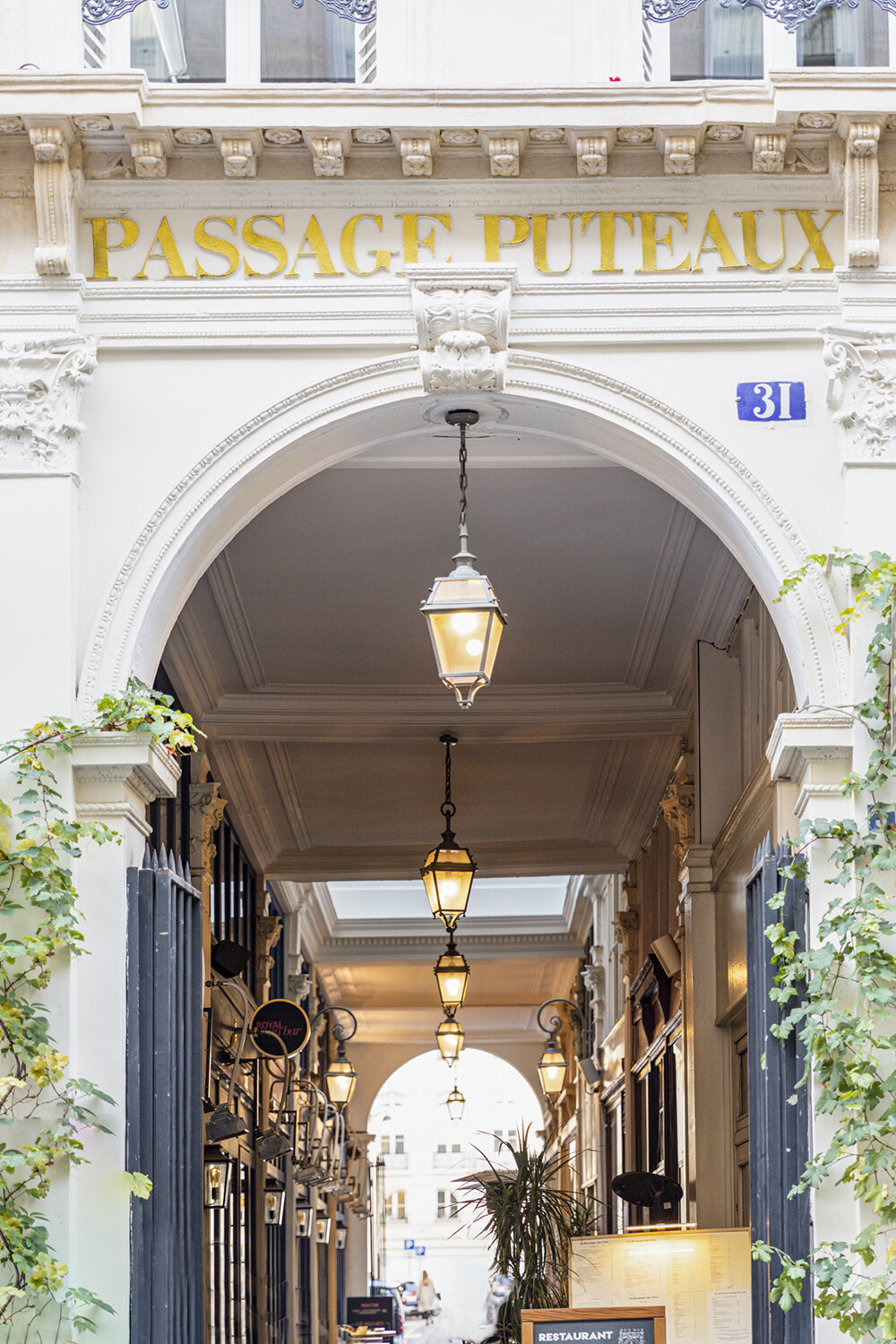
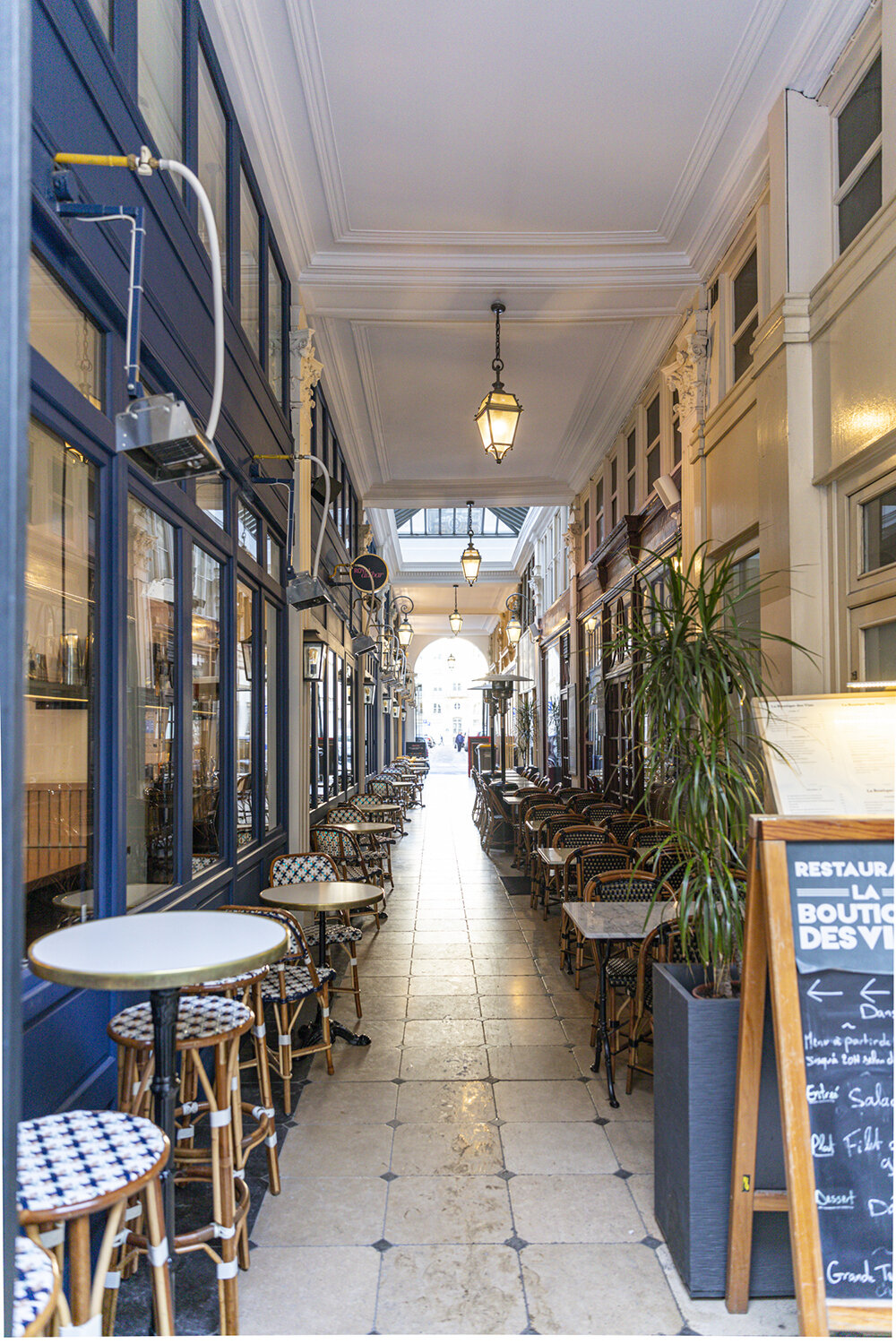
10
GALERIE DE LA MADELEINE
In the 8th Arrondissement between Place de la Madeleine and rue Boissy d’Anglas, Galerie de la Madeleine was built between 1840 and 1845. It used to be inhabited by artisans and small businesses but now contains mostly luxury shops.
We hope this post has given you at least a glimpse of the fascinating world of Paris’s passages and galeries and motivated you to visit and explore.
You can find a full(er) list of the existing passages and galeries here. This list includes all the arcades we have mentioned in our post along with several others that are just as worth visiting. Armed with this list and Google or Apple Maps, you will be able to find all the arcades on a map and get a clearer idea of their geography. Look them up before you go and visit them because they have specific opening hours. If you want to see them empty, get there when they open. If you want them full of life and bustle, go a bit later in the day when the shops and cafés have been open a while and are doing business. Don’t try to visit too many arcades in a short period of time. Each one offers much to explore and linger over, restaurants and cafés to try, even hotels to stay at.
PASSAGES & GALERIES FINE ART PRINTS
We have added a number of classic images of these galeries and passages to our shop, perfect for framing and hanging, in case you would like to add some beautiful Paris decor to your walls. If you can click on one of the photos in the post, it means there is a corresponding listing in the shop and clicking will take you to the listing. Or you can view all the new images by clicking on the collection above. And if you would like prints or canvases of images in the blog post that you do not find in the shop, please contact us with your requirements.
Thanks very much for reading our blog post. We would love you to leave a comment, share your own Paris galeries or passages experiences, or ask us any questions you may have. We respond to all comments promptly.
And please share this blog post with your friends.
À bientôt!
Georgianna and David
